Audience ClairAudient 1+1 V5 Personal Reference Monitors – True Field Precision Envisage
Audience ClairAudient 1+1 V5 is a $3900 USD pair of speakers, sold as a pair, with Dual Full-Range Drivers in Bipole configuration with two side firing passive radiators, and 5-Way binding posts. This is one of the most technologically advanced pair of bookshelf monitors, so despite the differences in design, we will compare the ClairAudient 1+1 V5 with all the other flagship speakers that we have reviewed, including Pylon Audio Diamond 30 MKII (3000 USD), Amphion Argon3s (3000 USD), KLH Model Five (2499 USD), and Aurender S5W (3000 USD).
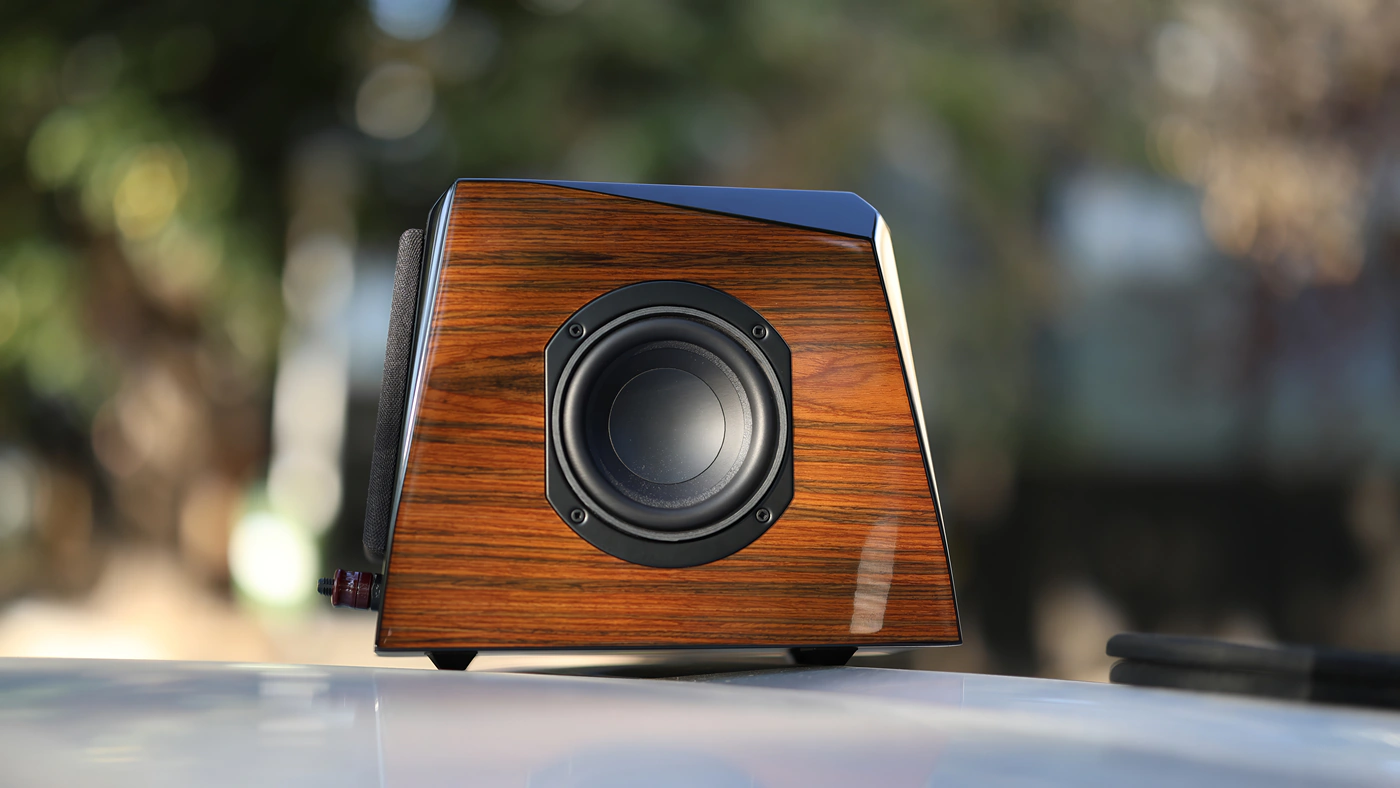
Introduction
Audience is a veteran company when it comes to producing speakers and audio products for desktop in general, but they seem to specialise in offering small footprint products, as we are also working on reviewing a cable from them, which is notorious for its good sound, yet light mass. As is the case with most specialist company, Audience products are either sold directly from their own headquarters, or fulfilled by HiFi shops all over the world, and the warranty along with the build quality is top notch, likely some of the best you will ever see in today’s market, a testament to engineering and technological marvel. As an Amazon Influencer, I earn from qualifying purchases, and using the purchase links in my reviews helps me maintain this website and Youtube Channel. Huge thanks to Audience for providing the sample for this review, in exchange for my honest opinion.
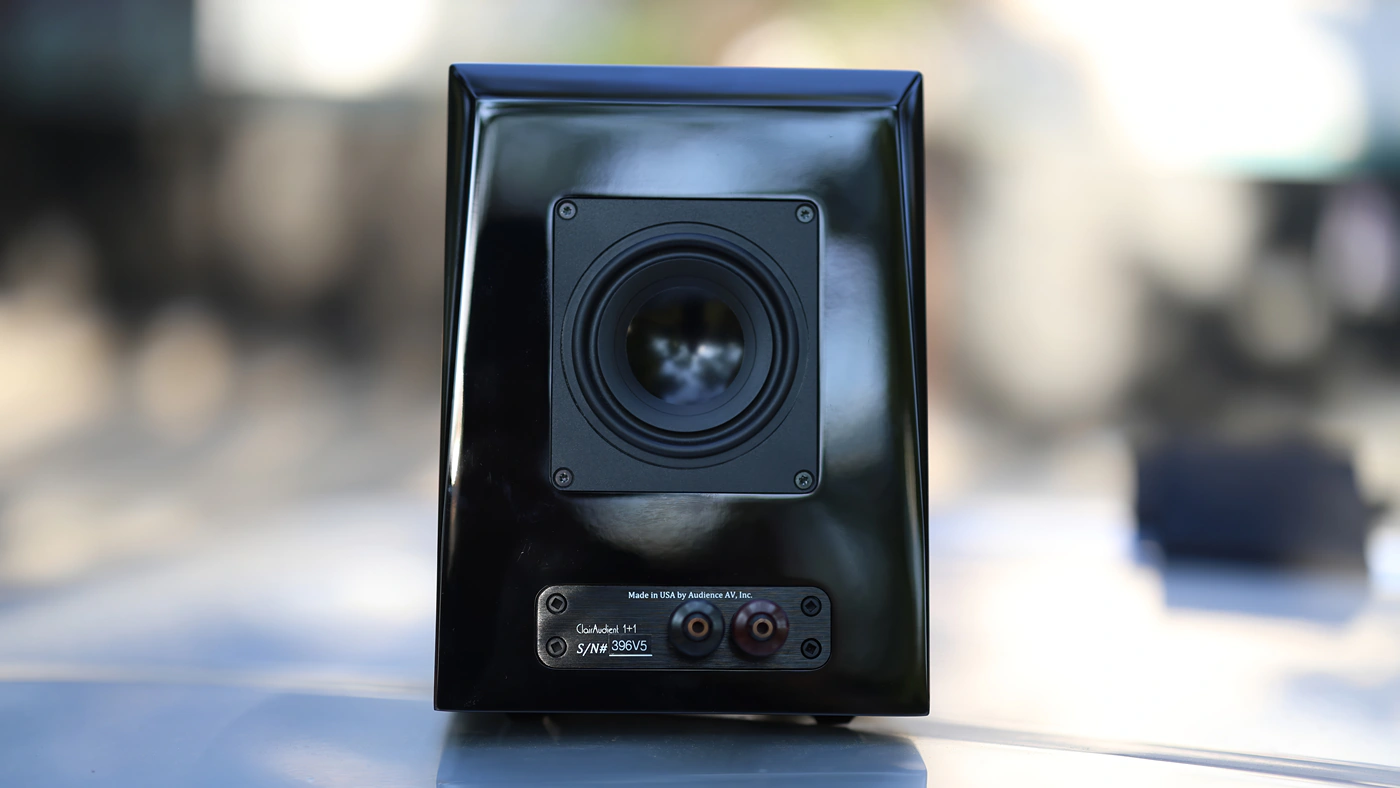
PROs – Wide and punchy sound, with excellent instrument separation. No coherency issues with no crossover, so a lower THD than most traditional Monopole designs, but still with a beautiful voicing, and spot-on sound for both male and female voices. Nearfield experience is great, with the room acoustic having very little impact on the sound. HiFi and typical stereo Far Field Experience is excellent too, and they are consistent regardless of their position in the room.
Cons – They need high driving power and a strong amplifier, limited bass extension, rolling off at 55 Hz.
Product Link
Official Link – https://audience-av.com/loudspeakers/
Build Quality / Aesthetics
Although we are looking at a full-sized speaker, Clairaudient 1+1 V5 is a unique speaker in the bookshelf monitoring market and small-footprint industry, as they rely on wideband unique drivers, eliminating the need for complex crossovers and separate drivers. This means that you can effectively get a pair of speakers that measure flat from 55Hz to 22 kHz, without the added distortion and loss in quality typically generated by a Crossover and complex electronic components.
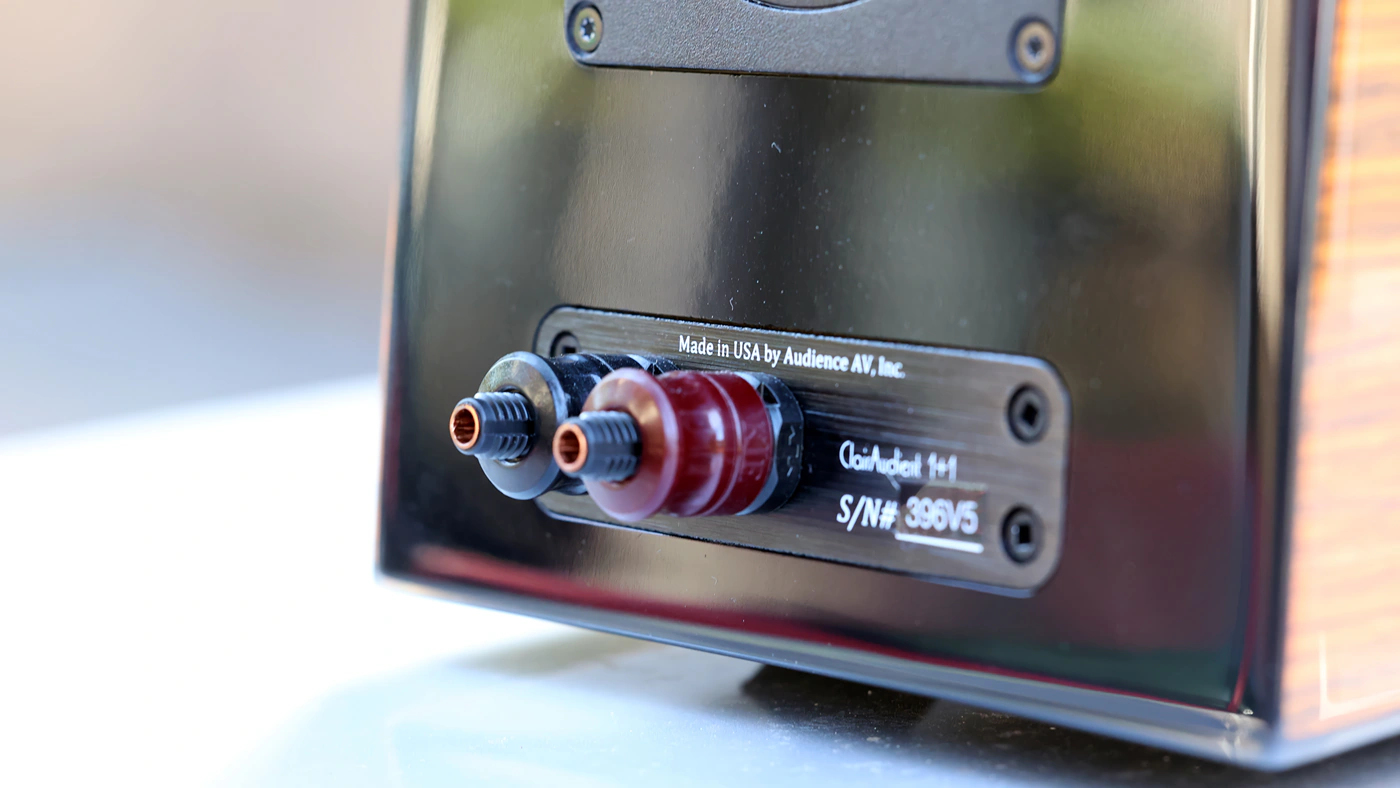
There is no way to create a better impulse response and general sonic coherency than having just one driver, and ClairAudient 1+1 V5 is supreme in this aspect, being a speaker favoured by sound engineers and artists working in the most prestigious studios in the world, thanks to having the smoothest and most cohesive transition between frequency ranges, with no dips or peaks.
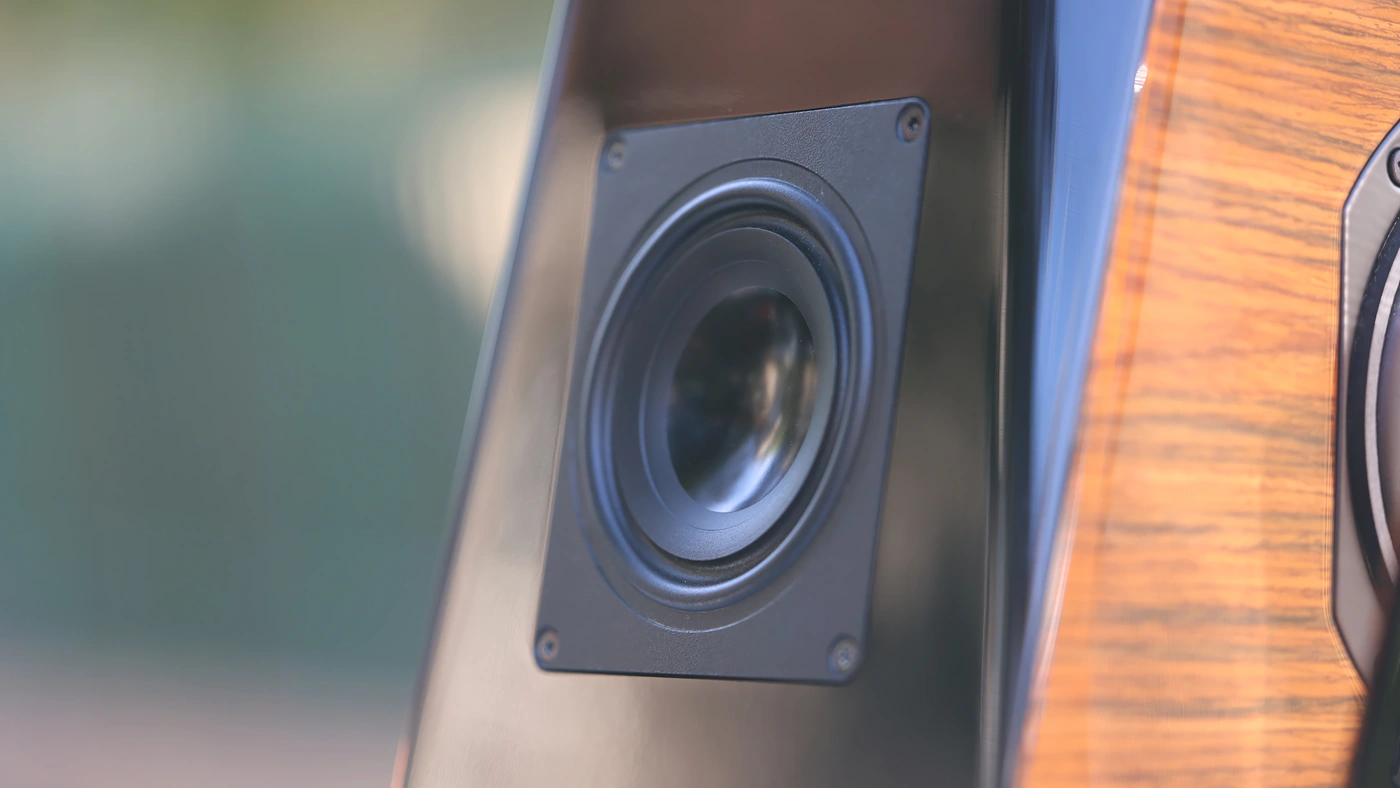
While in the earphone and Headphone world, we always reward engineering at the driver level the highest praise, most speaker creators use drivers that are already produced en masse by someone else, and most speakers on the market today are a remix of different drivers, cabinets and crossovers, generally produced by someone else, usually with the acoustic design being the part that the speaker designer does. Audience is different here and the driver inside of the 1+1 V5 is a highly customised driver, proprietary and wideband in design, capable of producing the same impulse response across all frequency ranges.
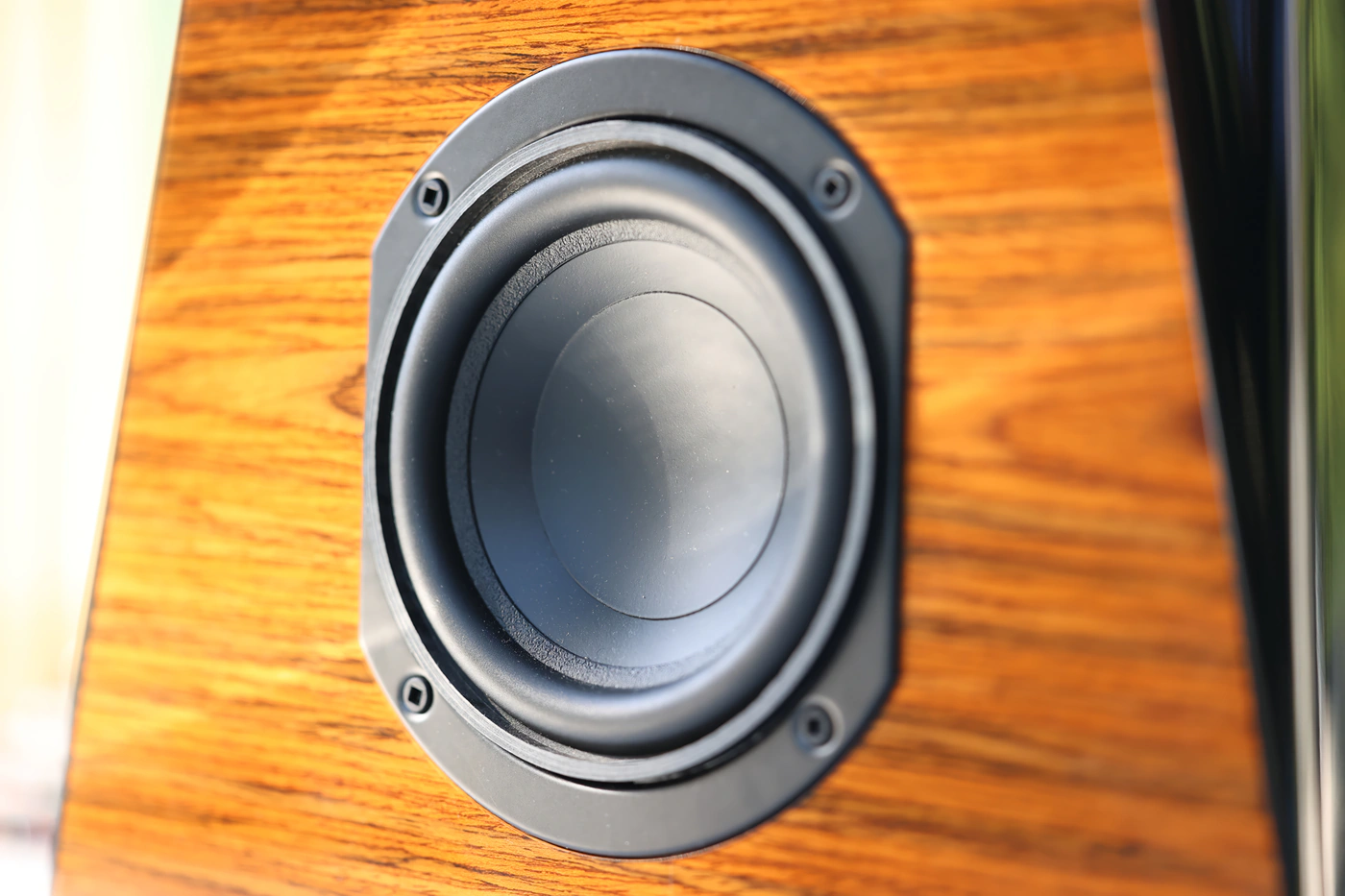
The whole speaker is a bi-pole design, which extends the low frequencies, heavily increases the power handling and expands the soundstage. To expand on this, we have three approach styles, which are monopole, dipole and bipole. Every driver out there produces sound both from in the front of the driver, and also equally in the back of the driver. Most traditional speakers are a Monopole design, which means that sound radiates from the driver in the front, but the back of the driver also produces sound that bounces inside of the cabinet and needs to be dampened before it either radiates in the room through a vent, or from a passive radiator. Dipoles are generally open baffle speakers that use an open driver, but have no cabinet, hence they have the generally bespoken open baffle sound.
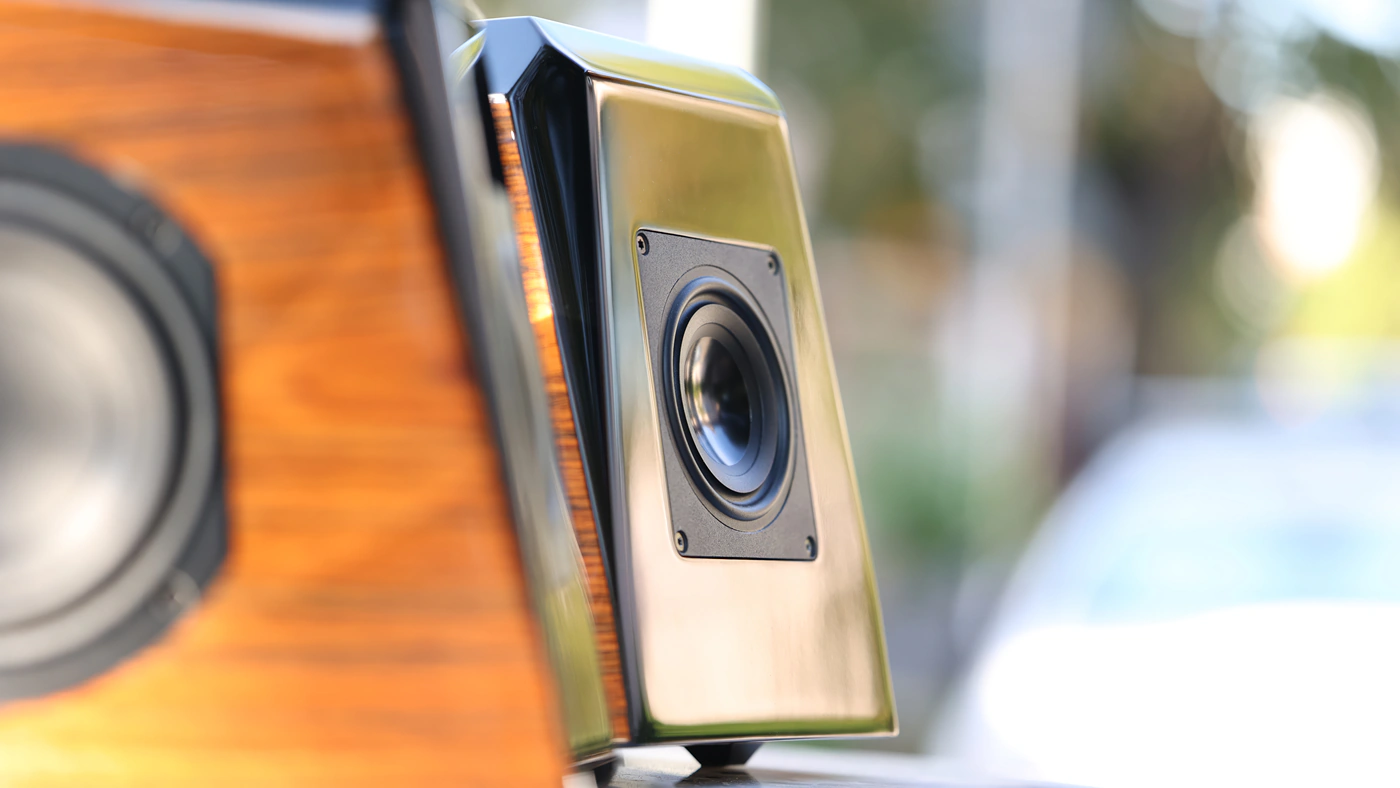
This sonic signature has far more air and a more crisp sound than Monopole, but a Dipole generally has a much lower amount of bass, and the disadvantage is that the sonic waves produced at the front of the speaker are in phase, while the ones at the back are in negative phase. This will output as much treble from the back as they do from the front, but as the waves produced are in phase in the front and in polar opposite phase at the back, the rear wave will cancel the frontal wave when they bounce off a nearby wall, usually lowering the bass extension greatly. The Dipole design almost always needs a subwoofer to sound complete.
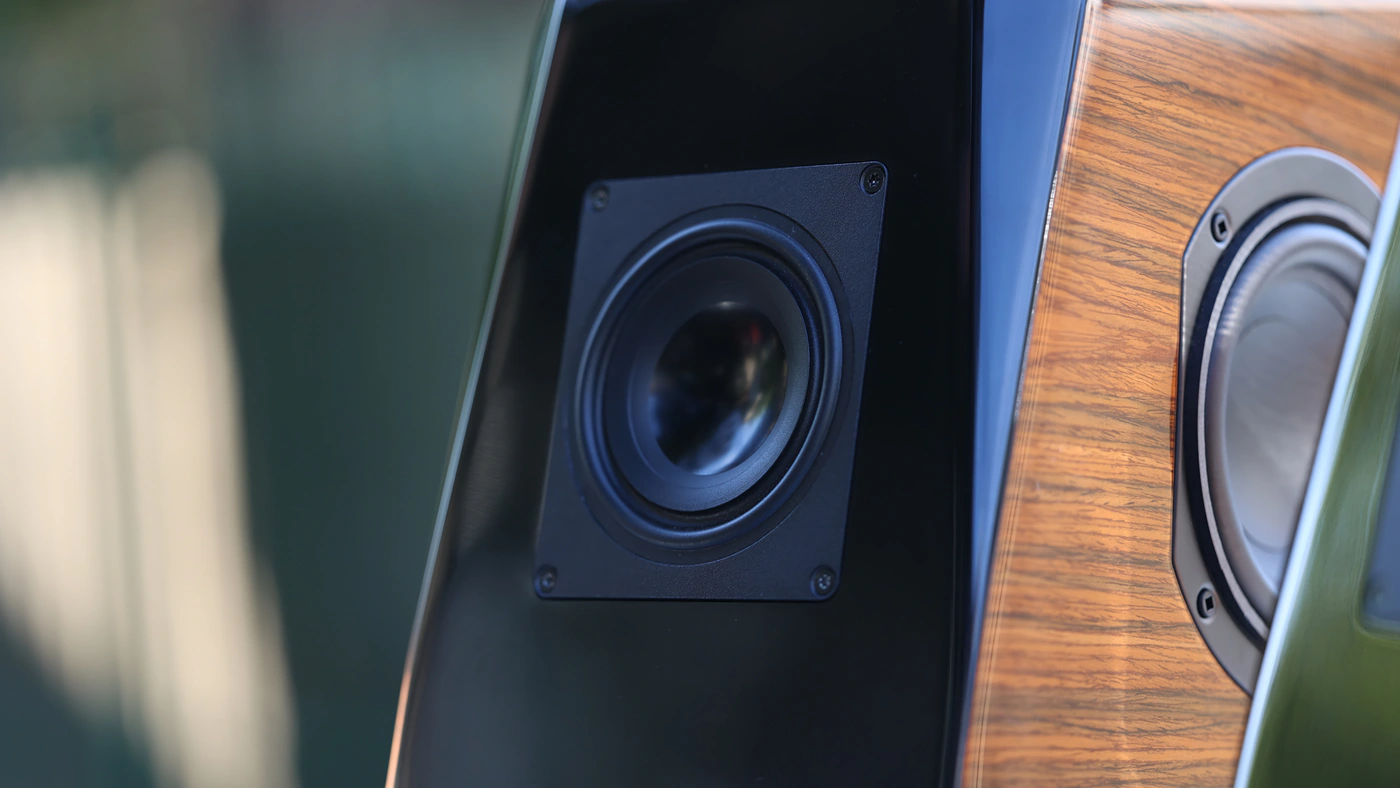
Bipoles, which is the type that Clairaudient 1+1 V5 is, is a speaker that has a driver at the front, and a driver at the back, having both the crisp and airy sound of Dipoles, but also the deeper and beefier bass of a monopole. The drawback is that a Bipole requires very careful cabinet design, as well as passive radiator design to take advantage of the drivers, and the sound of a Dipole can be enjoyed at any distance from the speaker, provided it is not glued to the wall behind, or if the wall behind is acoustically treated. Because the sound produced is in perfect phase in all spots around the speaker, they generally have the best dispersion of all frequencies (Dipoles have high dispersion for high frequencies, but poor dispersion of low-pitched frequencies), and soundstage of a well designed Bipole is inherently larger and the sound can have better impact and dynamics than either of the two technologies, if the cabinet is well designed.
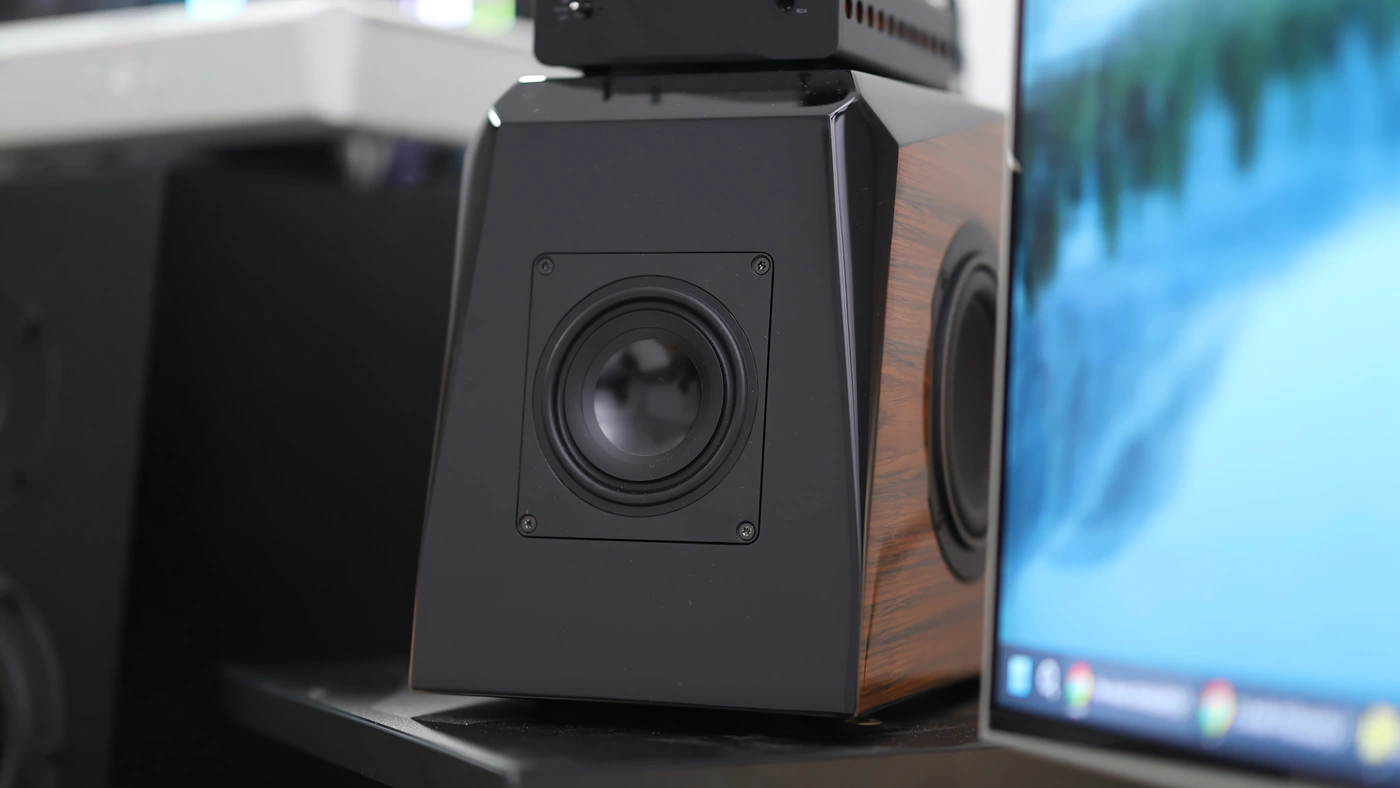
Despite their visibly small size, 1+1 V5 implemented the A3S2-16 Drivers which are a dual gap motor design with ultra long-throw excursion, providing surprisingly high SPL levels and dynamic range, despite their ultra-small size. This ends up in your ears as excellent resolution at low volumes and strong slam, aligned with a high level of dynamics. Going a bit more in-depth with the technical data, the ClairAudient 1+1 V5 is a speaker that is 8″ Tall, 9.75″ Deep and has a 6″ width. The impedance is on the higher side for speakers at 8 OHMs, while the Sensitivity is fairly natural at 87 dB. The recommended Amplifier Power is set between 15 Watts and 60 Watts, but the AMP should be able to provide this power for the 8 Ohm / 87 dB impedance. With more in-depth testing, I found that despite their small size, 1+1 V5 are fairly easy to dirve, but they will shine with a high quality amplifier that is able to work in synnergy with the resolution and detail 1+1 V5 can offer. While entry-level amplifiers like Fosi Audio v3 Mono, or AIYIMA A07 PRO can inherently be limited in resolution, I found that a power amplifier like Burson Funk is more than enough to properly drive and master the 1+1 V5 and even low power Tube AMPs can work very well with them. For today’s review, I relied mostly on using Keces S300+ and ECDesigns PowerDAC-SX, with the mention that PowerDAC-SX is not a power amplifier, but a DAC with output, yet its power and resolution has been more than enough for the 1+1 V5.
Usage / Placement
The theory is that the Dipole design has a huge advantage in terms of dispersion and how good the soundstage is with a pair of speakers using it, as long as the cabit is designed well. For my initial experiment and listening tests, I have used the 1+1 V5 as desk speakers, or placed on stands at about 1 metre away from the listener, and I found that the experience is more intense and forward, with a stronger midrange and a higher degree of mid impact, the closer you are physically to the speakers. To update the original testing and review, I have done further testing and have placed the CalirAudient 1+1 V5 in the same listening position as Pylon Diamond 30 mkii, and we have used the 1+1 V5 for watching movies, or listening to music even far away from them. The filling power of the speakers is excellent, and the sound is actually a bit more balanced this way, with the midrange frequencies being less forward, hence my decision to rename the review to True Field, as 1+1 V5 would wrok excellent as nearfield monitors, but become veritable HiFi Speakers when they are placed at traditional Stereo HiFi listening distances. Wit 1+1 V5 you basically have access to both a professional nearfield listening spot for a monitor, but also an excellent far field or Hifi Stereo setup like Pylon Audio Diamond 30 mkii.
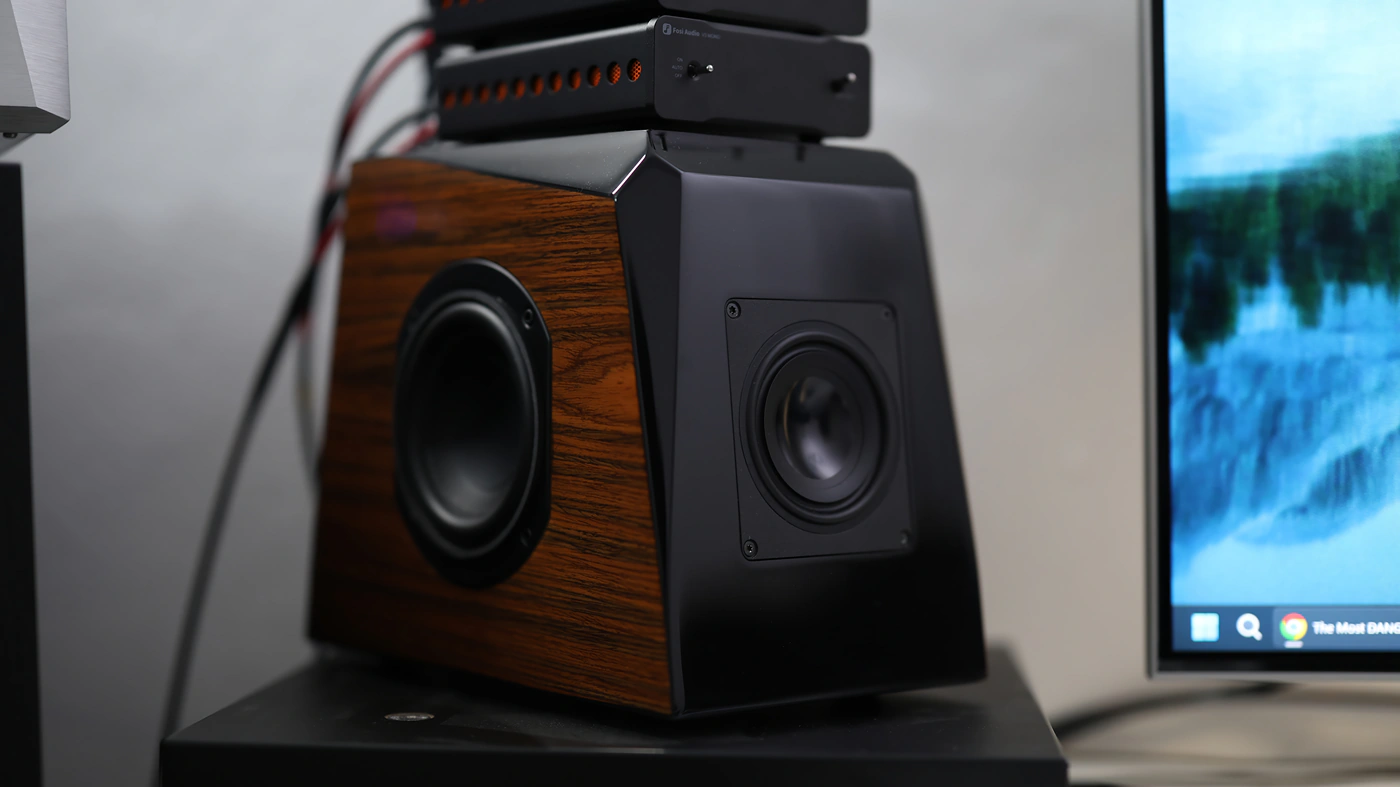
We have a speaker that is very sensitive to vertical positioning, and the sound is really great if the wideband driver sits at the same level as your ears, with the driver allowing you to sit comfortable above the speakers but not beneath hem, as the frontal part has a slight angle to create a wider dispersion upwards and a lower dispersion downwards. I estimate a dispersion cone of about 90 degrees but it is not directly frontal but angled upwards slightly. The horizontal dispersion is very high and excellent, with a focused, forward and strong sound if the drivers are pointing right at your ears. With more testing, I estimate a dispersion angle of about 130 degrees for an excellent sound, but a sweet spot of about 90 degrees. It is best that 1+1 V5 are not pushed against a wall, especially if the room is not acoustically treated, and the best sound can be heard when they sit even slihgtly farther away from the wall behind.
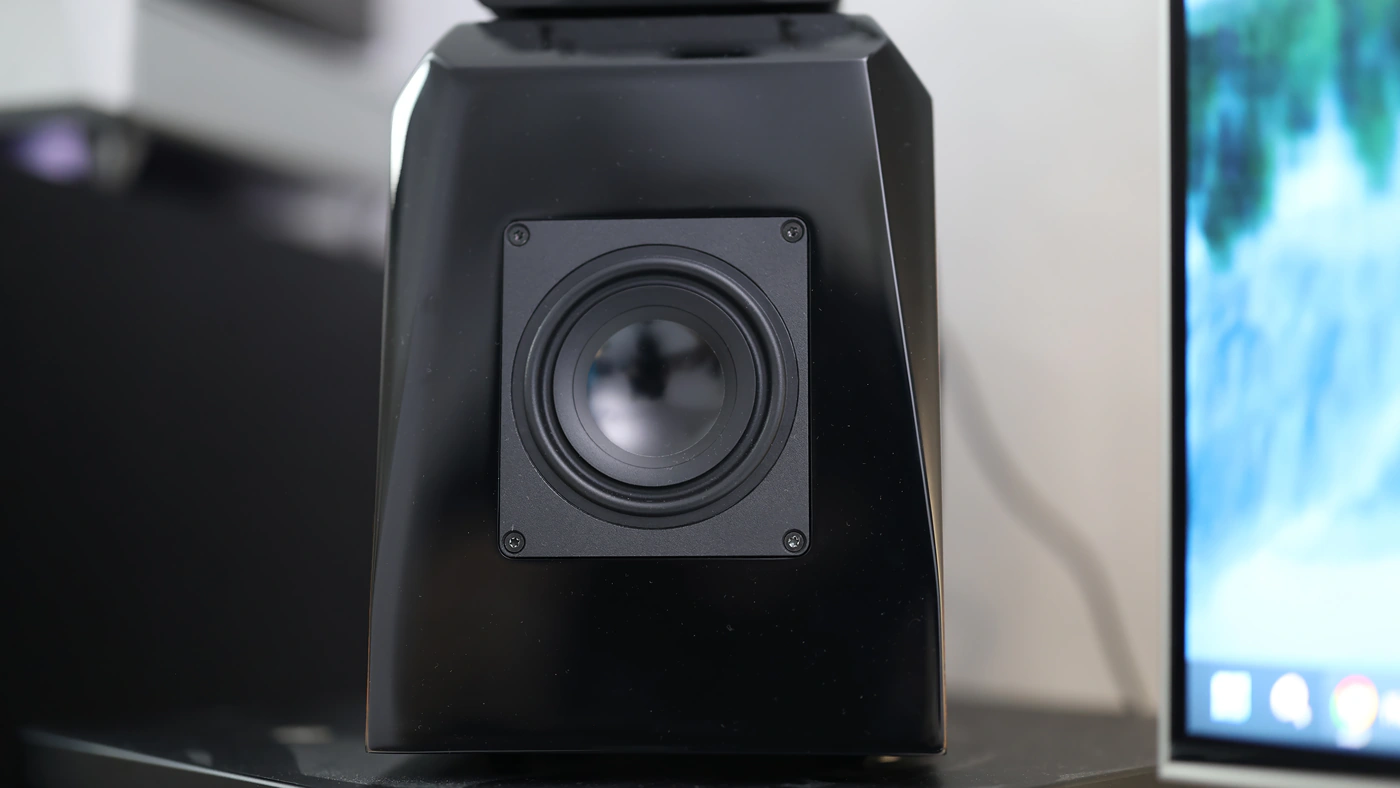
The driving power of the amplifier is not as important as is the quality of the amplifier, and I seem to have very few midrange power amplifiers, most of them being either high-end flagship units or entry-level AMPs. I have tested the 1+1 V5 with a wide selection of AMPs, but they need a good one to be driven well. You can easily notice the more raw energy and impact of the S300+ AMP, or the gentler, more refined sound of the ECDesigns Power-DAC SX, if you’re using high-end AMPs.
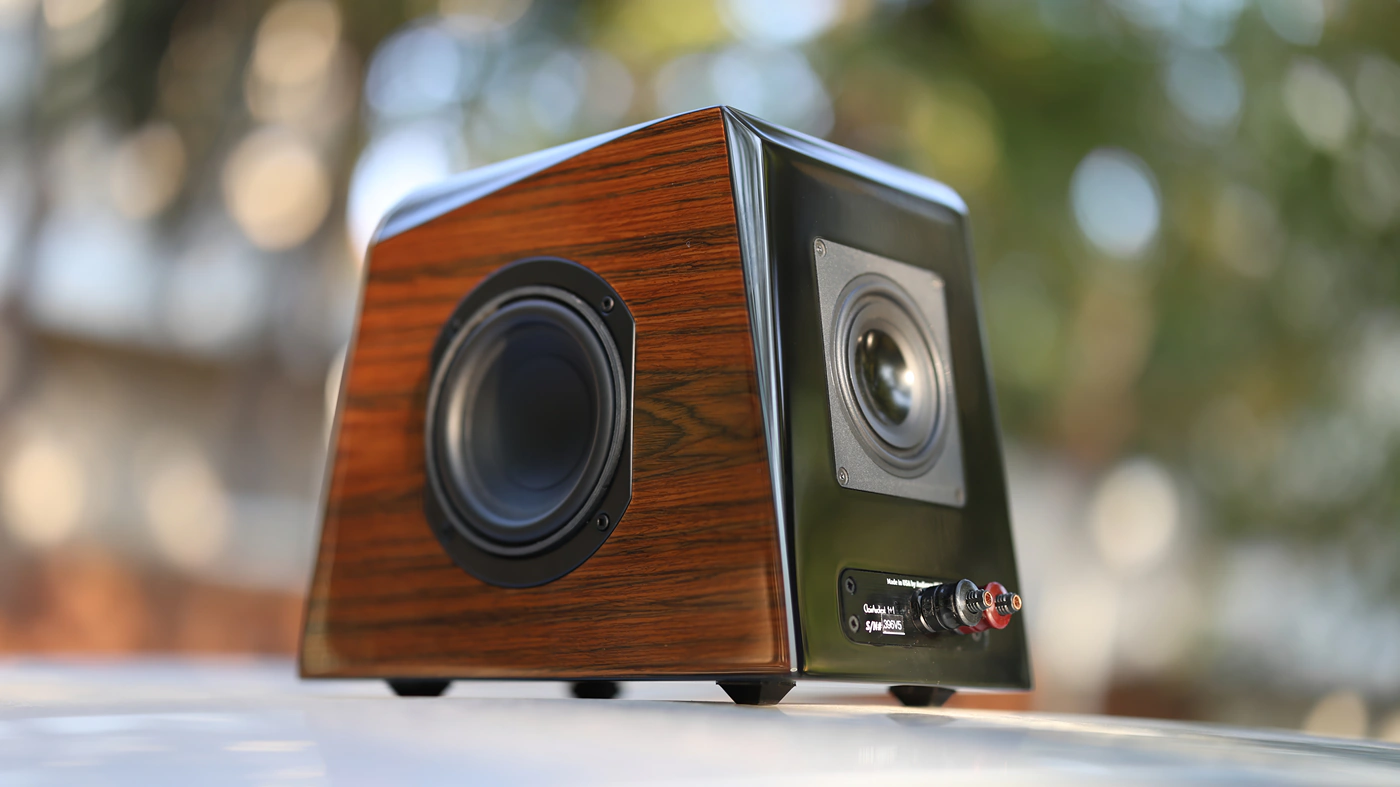
Generally, every field experience is excellent from Near Field, To Middle to Far Field, with 1+1 V5 being great for any room size and shape. The main room I use for reviewing is acoustically treated, but I have tested them in many rooms, including a bathroom and a kitchen, none of which are acousticall treated, to better understand what the 1+1 V5 react to in the environment. I found that with a nearfield listening position you get the ultimate precision and a more forward midrnge, voices are forward, and you hear every single bit of detail available in your music. Once you move away from the intimace of a near field listening position, the soundstage becomes wider, instruments have more space to reveal their fully body and the whole sound created is more HiFi like. I find this very interesting, as in the first moment I published the review, I used the 1+1 V5 mostly as a nearfield listening monitor, but with more experimentation, they can totally fill up a room, and if you sit farther away from them the bass reaching you is warmer, and the midrange more natural with a more traditional hiFi tonality.
Sound Quality
Overall Signature – The best way to enjoy the Clairaudient 1+1 V5 is at medium and higher volumes, and although it retains all of the impact, dynamics and clarity even at lower volumes, they really shine when you allow them to unleash all their strength and power, reveal all their dynamic range, impact and bass depth. Depending on your listening position, the closer you are to them. the sound is more mid centric for the most part, pushing forward the voices, revealing minor differences and inflections, subtle tonal differences and differences between instruments really well. There is a strong sense of coherence and cohesiveness, the entire sound has the same natural-fast speed, detail is insanely good, while the bass extension is actually quite good, reaching about 55 Hz, with full force, and the whole presentation is linear bottom all the way to the top, where at 16 kHz, the treble is present, evident, but smooth and relaxed, the whole sound being lush, smooth and musical.

One thing that is very evident with this kind of tuning / signature is listening to a large collection with multiple mixing / mastering styles and hearing the differences between them, as ClairAudient 1+1 V5 imposes its own tuning / signature on the song much less than all of the other speakers I reviewed to date. Imaging is top-notch and so is the stereo separation, as this is a speaker that reveals even the smallest details audible in the background of each song. Voices in particular sound as if the singer was sitting next to you, and 1+1 V5 prioritises voice realism above all, creating one of the most beautiful voicings I have ever heard.
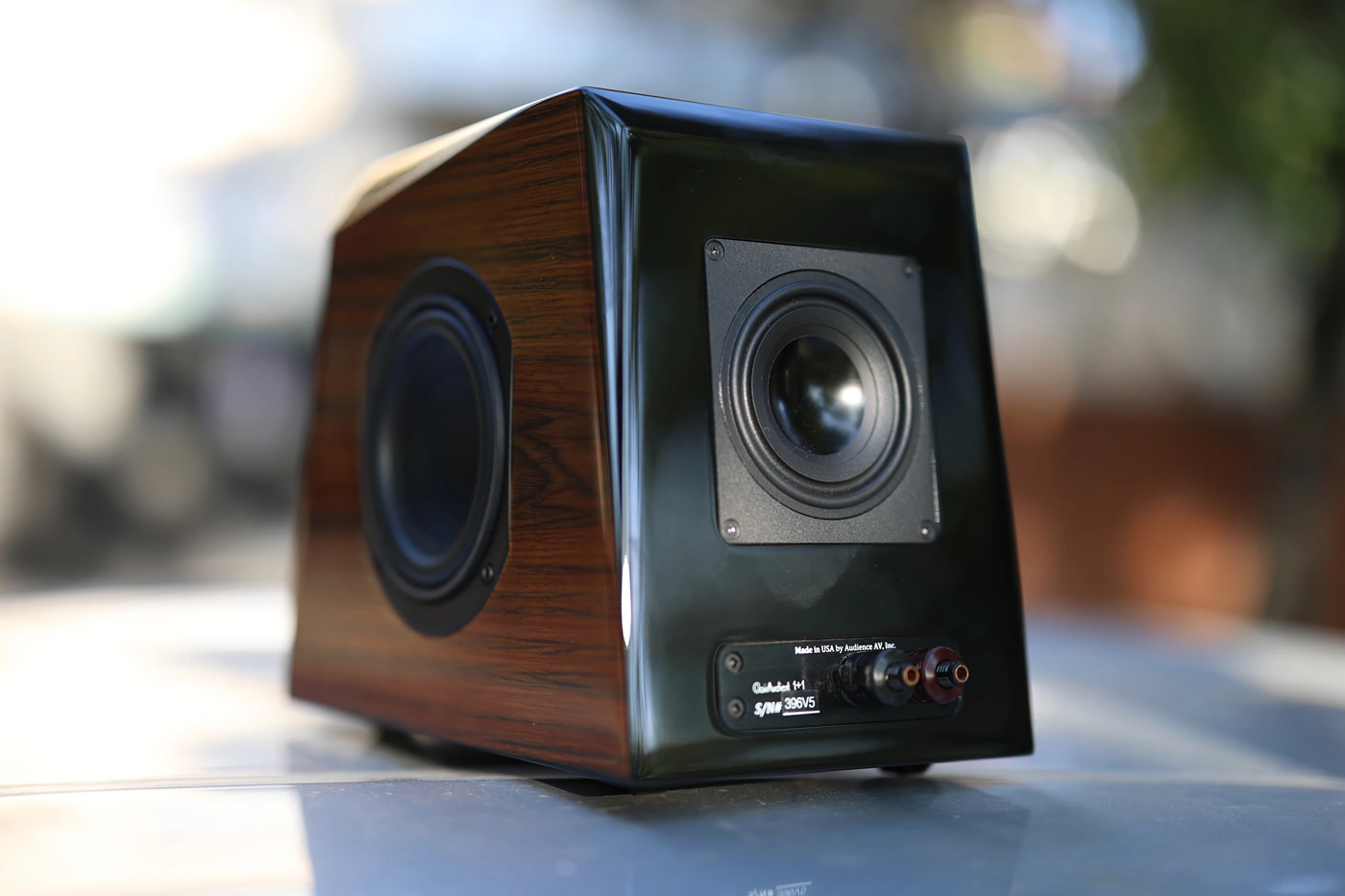
Bass – If you want to start from the bottom, ClairAudient 1+1 V5 has a fair bass extension, down to 55 Hz, which you can actually hear, although it has a -3 dB at 55 Hz exactly, with the bass reaching a more linear presentation from 60 Hz and upwards. The sound has a strong boom and punch to it, the sub-end extension being much deeper and fuller than you’d expect from drivers of the size 1+1 has. There’s a strong sense of speed and resolution in the bass, and while speakers with a much stronger bass extension generally show more sub-bass rumble and deep will also have a resonance point that all bass notes will bear. 1+1 V5 shows the bass every single song has, from the deeper, slow and beefy Billie Eyelash uses in her recordings, to the warm and fast bass Hime Hina have in their songs. Warmth is just as much as the recording has and certain recordings are warm, fuzzy and lush, and bright sound and tune is presented as such. Bass guitars in songs like Nightmarish are lush, deep and full, and have a rich body, and presence, without rolling off in any way. The limited extension is mostly evident in synthetic music, and 1+1 v5 is a faithful speaker if you’re mainly enjoying rock, acoustic and even metal music, although I find the punchy and dynamic sound to be downright excellent for some EDM, Dubstep and rap too.
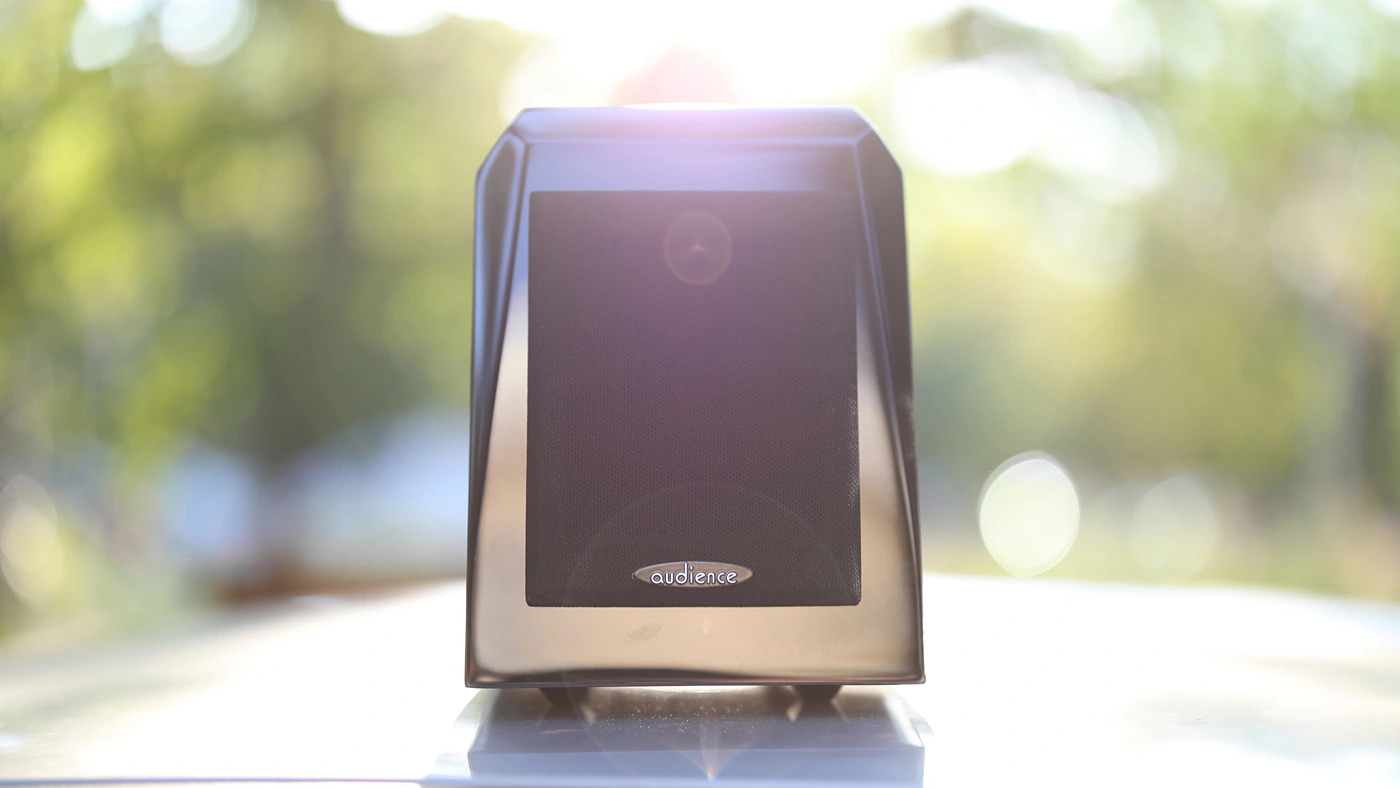
Midrange – The midrange is the focus of the sound with 1+1 V5, and this is a pair of speakers that will extract and reveal every single bit of detail and information in the midrange showing a realistic and beautiful voice for every single female singer, from Hime Hina to Mori Calliope to Billie Eyelash all the way to Futakuchi Mana. 1+1 is the speaker that has the most realistic voicing, being what I consider perfection, showing every bit of texture, emotion and sentiment in the voice, and with each song feeling like the singer is right in the same room as me, putting on a live performance just for my ears. The dynamic range is absolute, and it helps a lot coin this realistic presentation, as there is a huge difference between a spoken and a whispered verse, both in loudness but also texture and the emotion transmitted is very clear. Male voices from bands like Rammstein also sound immediate, realistic and forward, with the right texture, tonality and a rich amount of information, including strong dynamics.
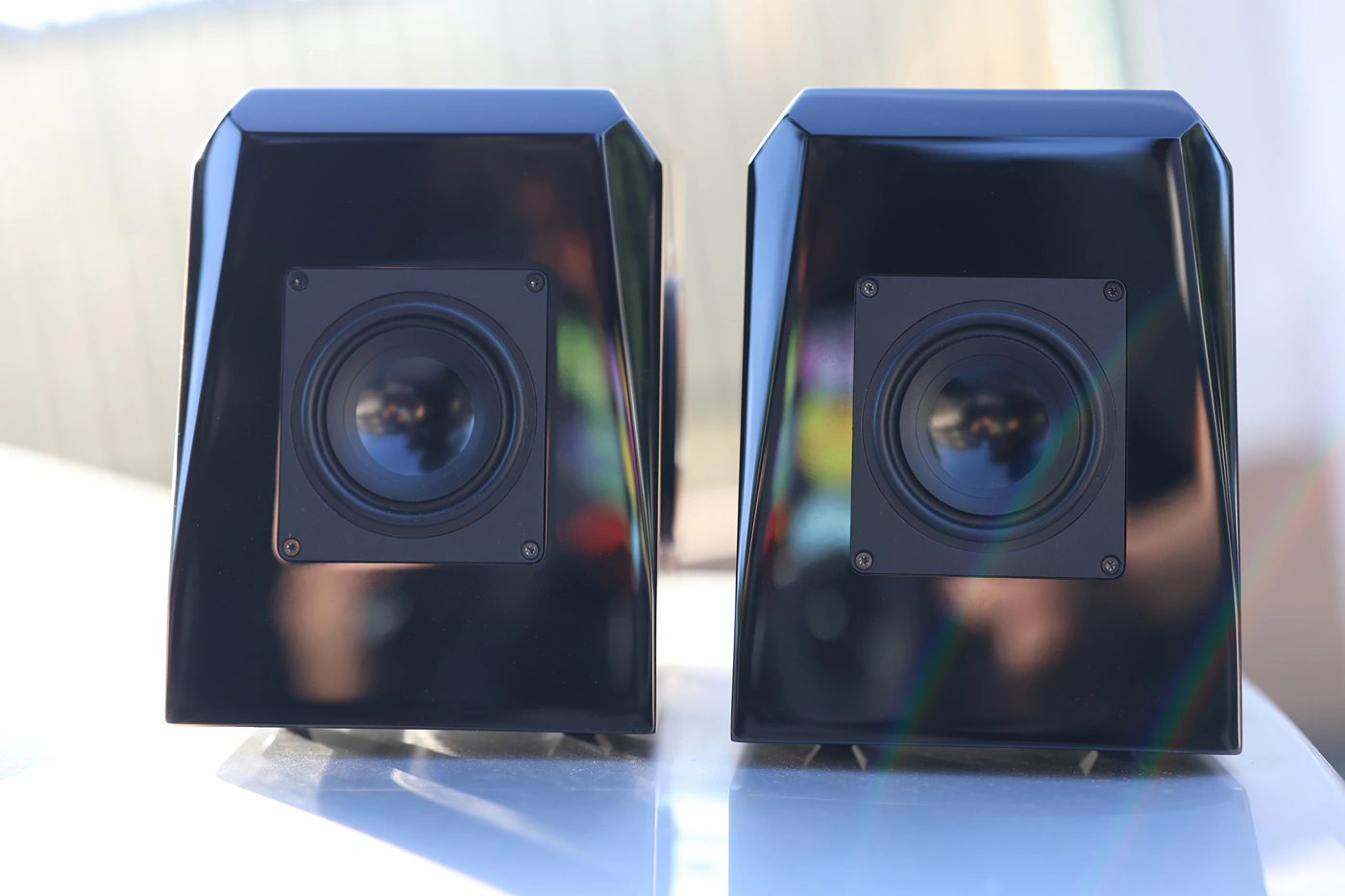
Pianos are crisp and shiny, with an especially vivid and realistic presentation, while background guitars are generally pushed back, presented with less grain and smoother than what I consider a default guitar presentation, as a guitar player. Lead guitars always have the proper texture, tone and presence, in songs like Drive from Incubus, where the lead acoustic amplified guitar sounds sweet and musical and combines nicely with the voices, while the drums give the whole song a rich, groovy feeling, as the song is designed to have. Whenever I play a rock song, the same groovy, musical and rich signature is revealed, even with songs from System Of A Dawn or Serj Tankian in his solo albums sounding musical, rich and lush, fluid and full. Having a full body to pianos, and classical instruments in general made me enjoy classical, Jazz and acoustic music in general far more than I typically do.
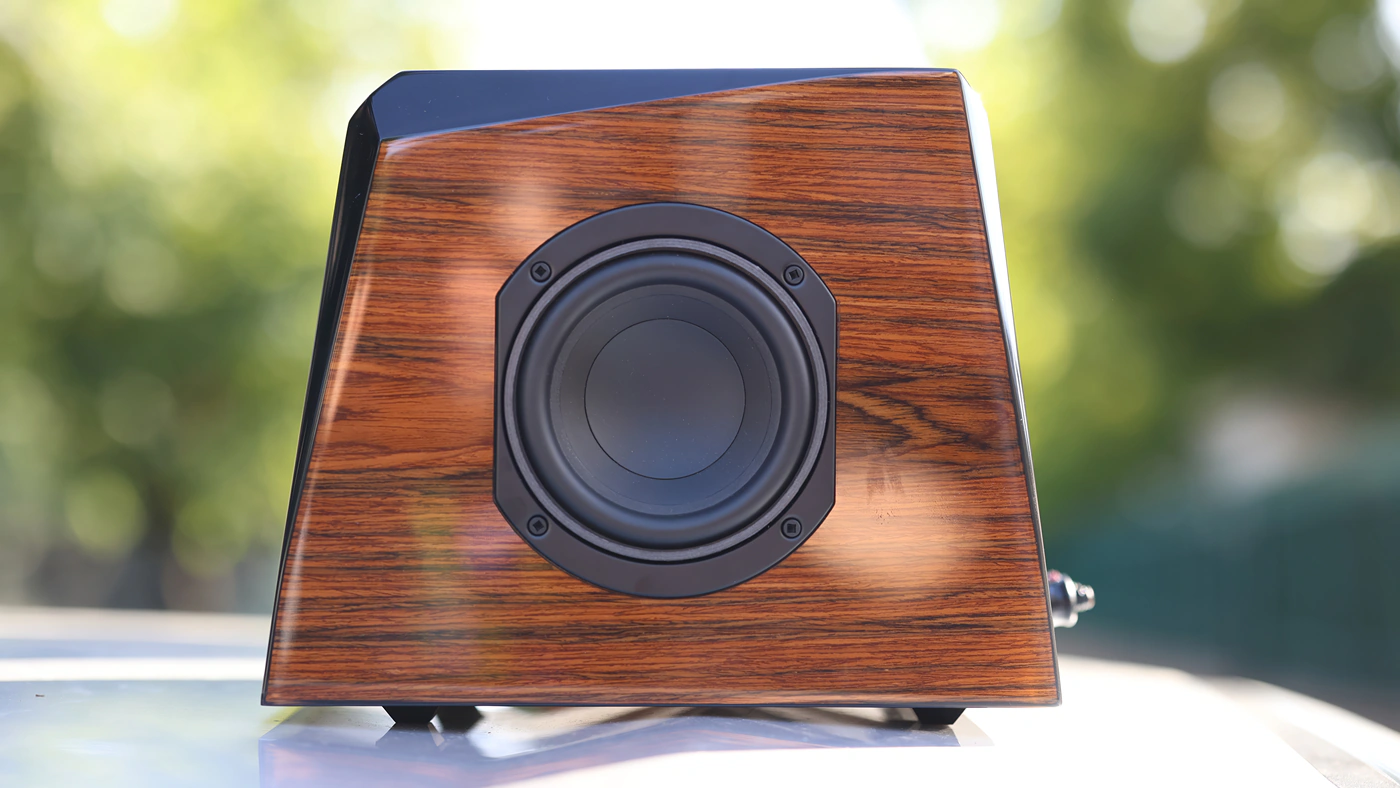
Treble – Audience 1+1 V5 is a potent speaker that can easily climb to 20 kHz and reveal all the micro bits of information there, but they keep the treble under control, smooth, rich and fluid, unless the song really asks for it. I initially thought that they would be smooth and relaxed always, but when a song has a sharp effect, cymbal crash or impactful instrument, 1+1 V5 doesn’t shy away from revealing the full strength and brightness of that song, but they don’t force brightness into songs that don’t have it recording / mixed in, as it avoids using treble to give a false sense of detail and resolution. Having this linear treble helps a lot in production, mixing and mastering, you know exactly how much to dial in and when to stop, and as an added bonus, 1+1 V5 stays fatigue-free and relaxing to listen to regardless of how much you use them.
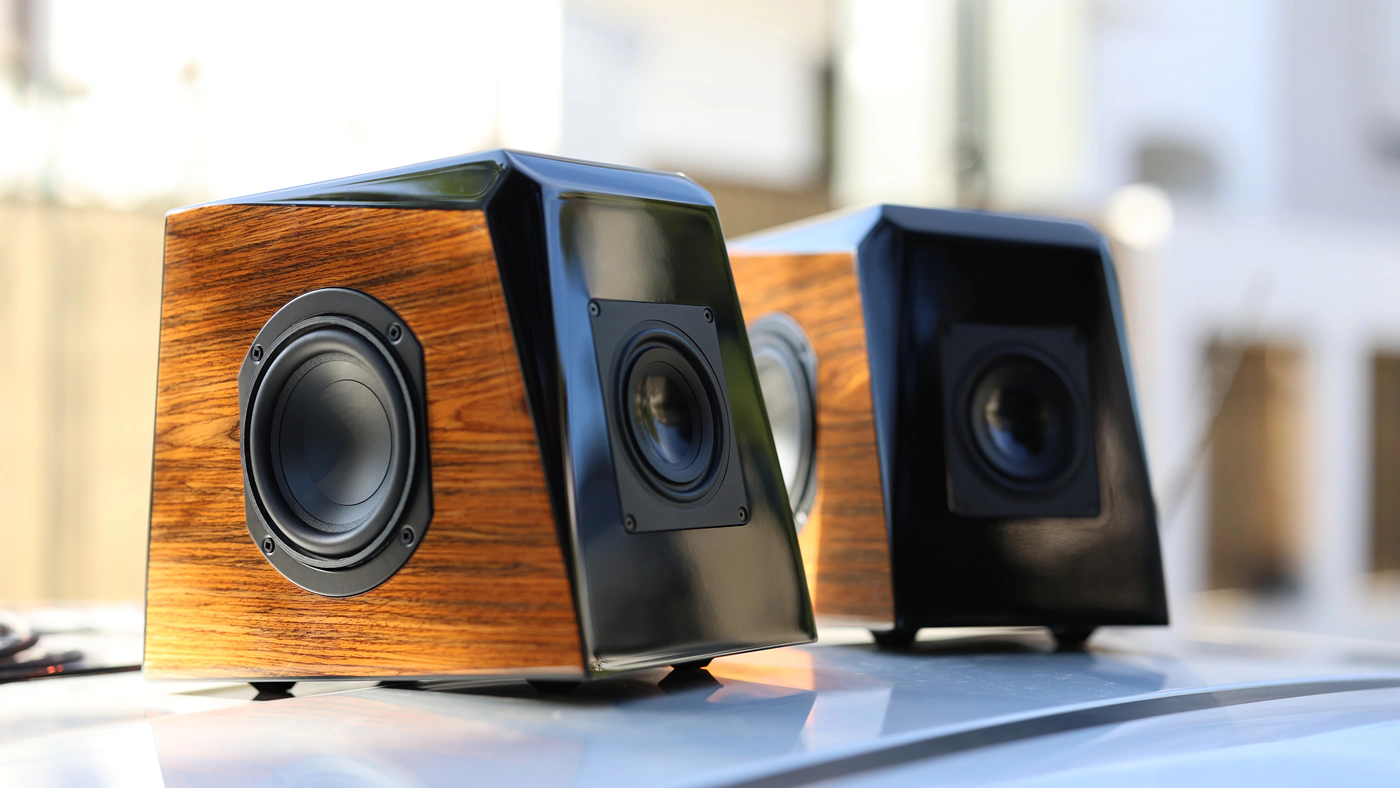
Dynamics / PRaT / Textures – Impulse response is the best you can get, natural-fast, but even across all frequency ranges. This creates a sound that is as close to real life as you can get from a speaker, you can hear the actual texture of a voice, the actual presence, warmth and emotion of the singer as if they were right next to you. Dynamics are top-notch, and I can immediately hear the difference between more dynamic and less dynamic sounding speakers, with 1+1 V5 sounding vivid and highlighting the difference between loud and quiet with a strong contrast. The more perfect things are, the less I can describe this level of transparency and absolute detail.
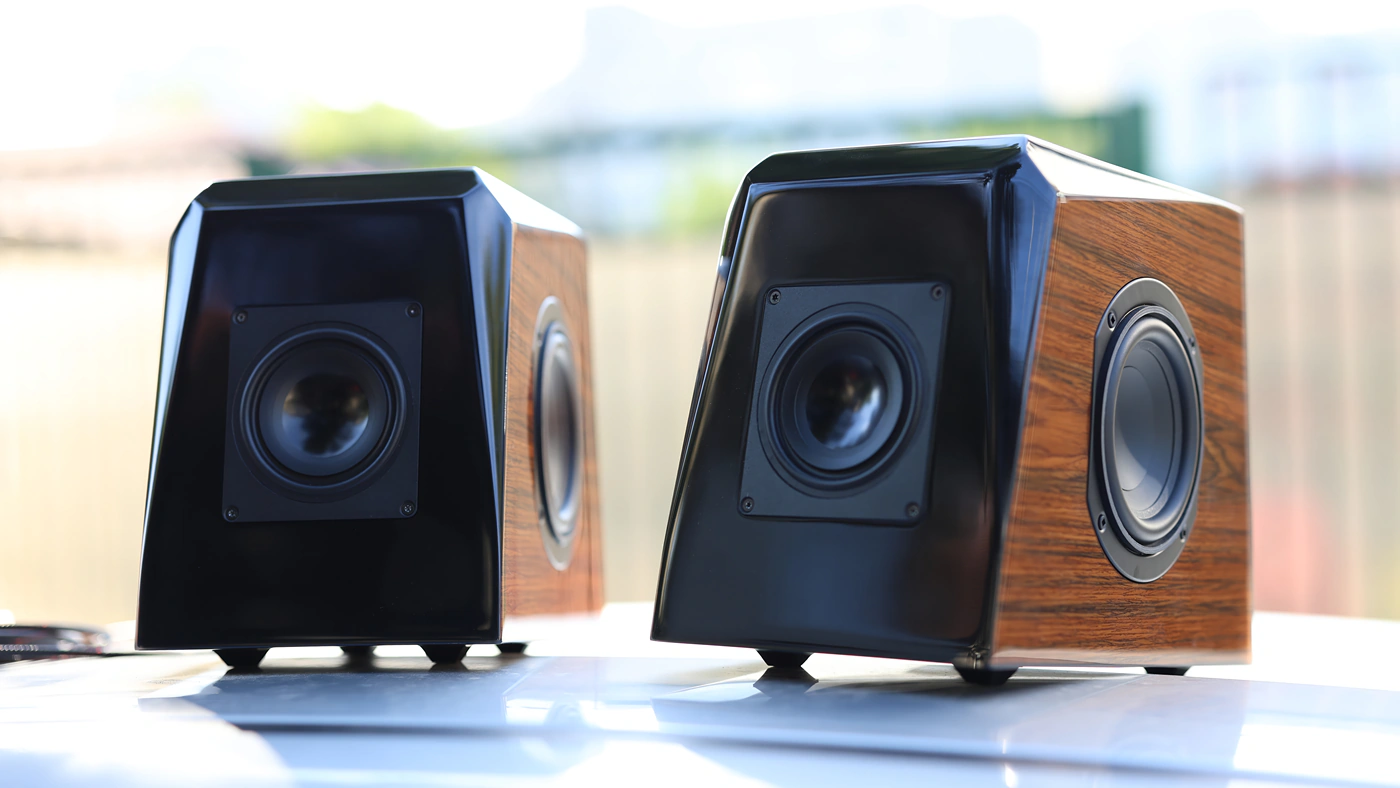
Volume Control – Volume control is, as promised, perfect. Both because 1+1 V5 require a lot of power to be driven well, but also because they just have this from the design, the sound is very similar at all volumes, although I won’t lie, I much rather prefer listening at medium and loud volumes, to quiet out the sound of myself typing this review, and to truly taste the unique characteristics of the 1+1 V5. You will get a very similar presentation, and even at extreme volumes there is no extra distortion, although this is a characteristic of the AMP too, with Keces S300+ being just perfect for the job.
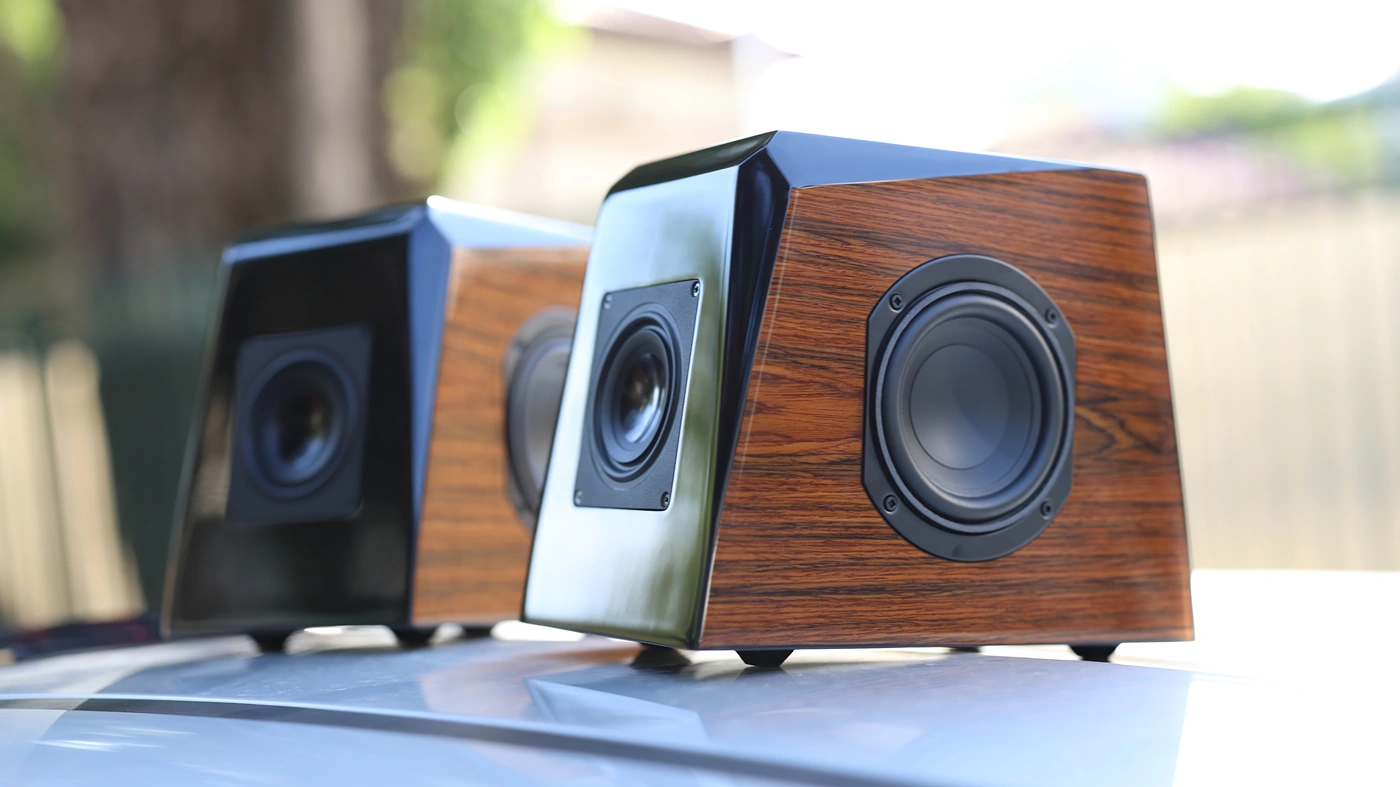
Soundstage – If you want to get a perfect stereo imaging and instrument separation, Audience 1+1 V5 is the right speaker to turn to. The soundstage size is natural, and it seems to reveal what the album has recorded and engineered inside, not force the music to be narrower or wider than it should be. This linearity is quite excellent, I am discovering background layers in pop and rock songs, but also noticing that certain songs are flatter than I expected as 1+1 V5 projects them exactly in the space they are designed to have. Monitors are always super fun to listen to, to get a better idea of what the band knew they were recording, and what they were expecting you to hear versus what you hear from most setups.
Studio Usage / Gaming
I see the Audience 1+1 V5 as a perfect speaker for monitoring and studio usage, it works very well in nearfield listening, it has outstanding linearity and is impervious to variation in volume, always showing the song as it is, good and bad. This allows you as the engineer and master to do your job well, it allows you to push back or pull an artist or effect to the front, it gives you a really honest presentation of the song and album, but in a rich and detailed fashion that’s fatigue free and ultra fun to work with. But the sound works beautifully if you’re sitting farther away too, creating a wider image and more space between instruments, more depth and allowing each instrument to have a more evident body.
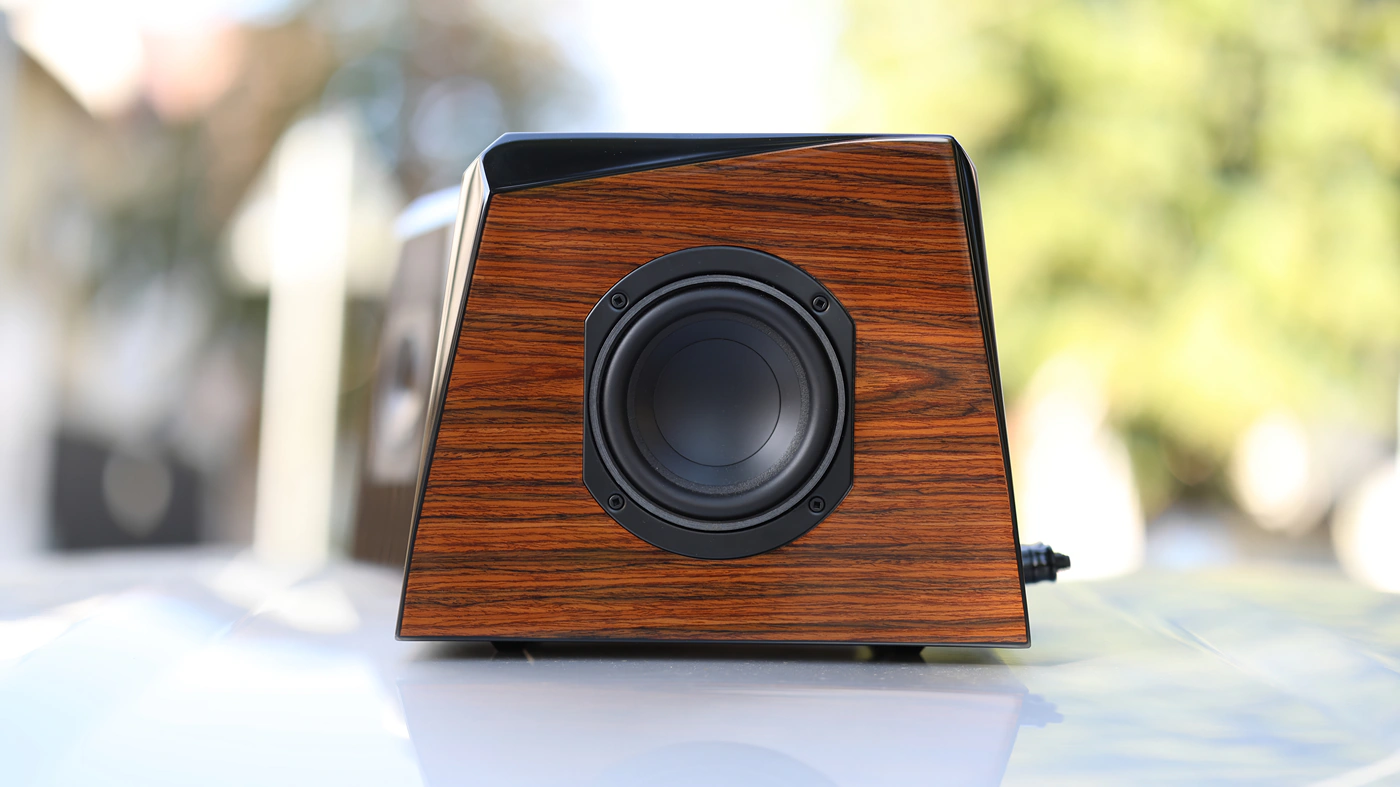
Although most gamers don’t have such a high budget for a pair of speakers, gaming with the ClairAudient 1+1 V5 is very good, thanks to the exceptional stereo imaging and directionality of the sound, as you will easily understand what each sound is, how far it is from you and where it is coming from. As you can get both a near field and a traditional HiFi listening experience, I had the most fun enjoying soundtracks from my favourite games including Visual Novels like Everlasting Summer, story-driven games like Death Stranding and listening to the soundtrack of our own game, Eternal Hour.
Comparisons
Audience ClairAudient 1+1 V5 vs KLH Model Five (3900 USD vs 2499 USD)
Build – KLH Model Five is a sealed design, so they will sound excellent even if they are almost glued to a wall, with the large woofer driver being able to produce strong bass extension, and the dispersion is higher both laterally and vertically, with KLH Model Five producing music that fills a room more evenly. Model Five doesn’t focus as much on detail, resolution and clarity, so they can sound better with affordable and entry-level AMPs, they mainly need some warm coloration and a bit of extra bass to reah their potential. In contrast, ClairAudient 1+1 V5 looks beautiful and modern, refined, and is much smaller, occupies much less space, while the cabinet has more engineering. Model Five has a pretty distinct cabinet sound / resonance that you hear throughout all music, while 1+1 V5 has a uniquely transparent cabinet which allows the original recording to shine through. 1+1 V5 requires a revealing and high-resolution amp to reach their full potential, but they depend much less on the room acoustics to sound good, with the nearfield listening position having less dispersion, the sound is more directional, but also a lower THD thanks to the design with no Crossover. Even if listneing to 1+1 in a HiFi position, they still allow for better transparency regardless of the room size and shape.
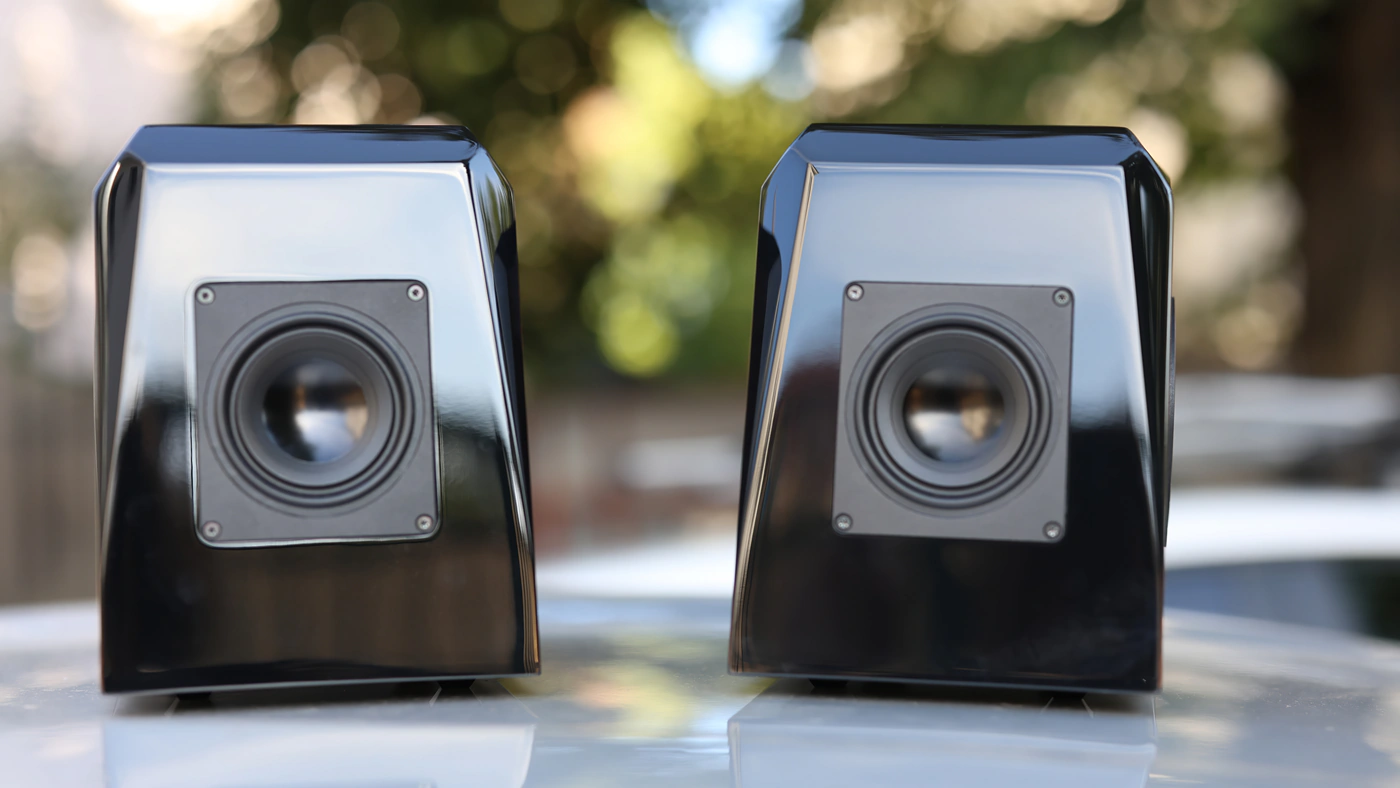
Sound – Sonically, Model Five sounds bright, sharp, has a full bass extension that is quite satisfying, but can be a bit too bright and with a flat soundstage at times. In contrast, if you have them in the right position, and properly amplified, Audience Clair Audient 1 + 1 v5 sounds much wider, deeper, and has a stronger instrument separation, with better resolution and higher details, plus a far more natural midrange. This seems to be an issue with most speakers, but 1+1 V5 creates voices that actually sound natural, crisp and detailed. When I was talking with Audience, they insisted that I should have a good amplifier before reviewing the 1+1 V5, and they were right, but once you give them the power they need, the resolution, contrast of the sound and smoothness of the upper midrange and lower treble far exceeds KLH Model Five and is on a level of its own. Model Five is great for a more vintage, warm sound, while Audience 1+1 V5 sounds linear, studio, flat end-to-end in the impulse response, and most importantly, it has a much cleaner overall sound, with the same DAC and same AMP, being able to scale more with a high-end source.
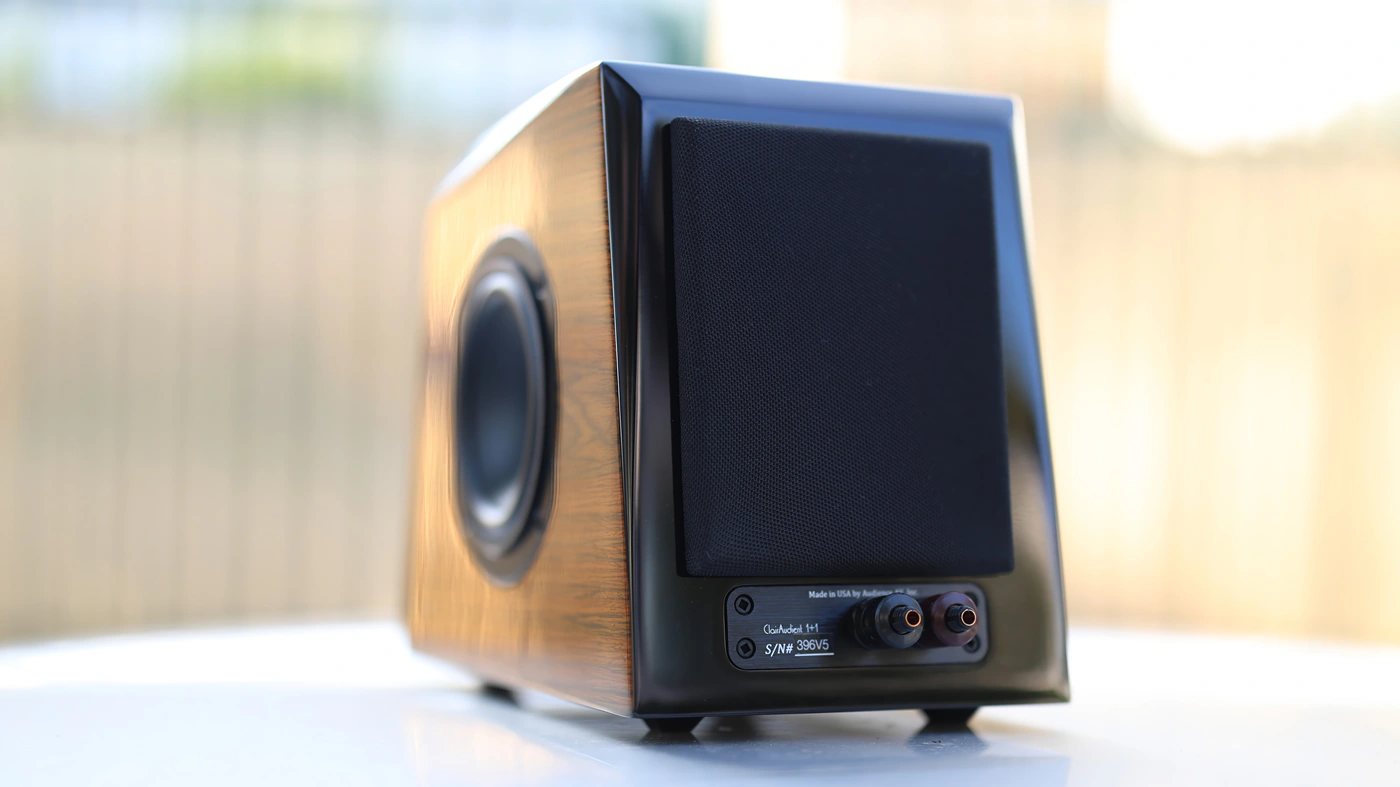
Audience ClairAudient 1+1 V5 vs Aurender S5W (3900 USD vs 3000 USD)
Build – Aurender S5W is the most similar speaker in today’s list when it comes to the shape and weight of the 1+1 V5. In fact, S5W actually has a strong advantage for not needing an amplifier, and they are even wireless, but the speaker itself is smaller than 1+1 V5, which comes with the advantage of a much higher portability, but also the drawback of a much sharper roll-off in the bass. 1+1 V5 is a bit more directional and needs to be more carefully placed slightly below ear level of the listener to truly touch that listening sweet spot, and laterally they are more directional, but more beautiful in person. Although the cabinets of S5W are sturdy and an industrial masterpiece made of metal, the lacquered wooden cabinets of 1+1 V5 are a timeless classic that will appear to everyone in every light possible.
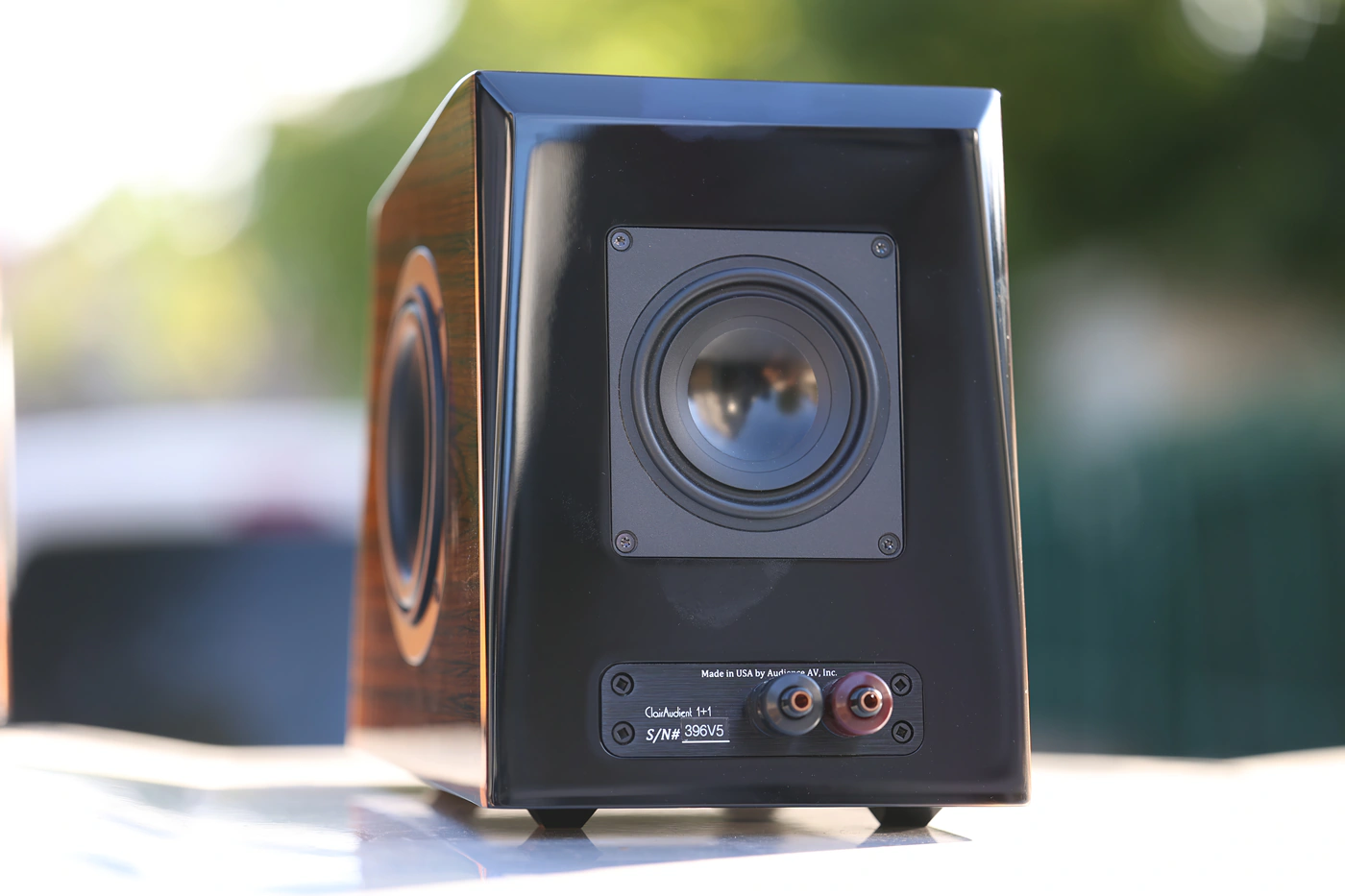
Sound – Sonically, the monopole vs bipole difference is easy to notice, 1+1 V5 produces a much wider, more holographic soundstage, with better instrument separation, higher degree of resolution and clarity, and a far better bass and impact. Although you can say that 1+1 V5 rolls off somewhat early, S5W also rolls off really early, and you can’t really hear drums or any kind of bass with S5W, while 1+1 V5 has more than enough for mastering, with the only limitation being a rolled off absolute sub-bass, which is easily fixed by adding a subwoofer, if need be. S5W sounds harsher and has more grain, which at first feels like a higher amount of detail and resolution, but once you allow each to play for a hundred hours or more, and once you adjust to the sound, you start noticing far more information, more detail and a better resolution coming from 1+1 V5, it reveals more information in the midrange, it shows where each instrument is much better, and the amount of texture feels more natural, yet the whole sound is smoother and much easier on the ears. Overall, Aurender S5W is a nice novelty product, but Audience 1+1V5 is a true pair of speakers I can recommend for music production, engineering and for listening too.
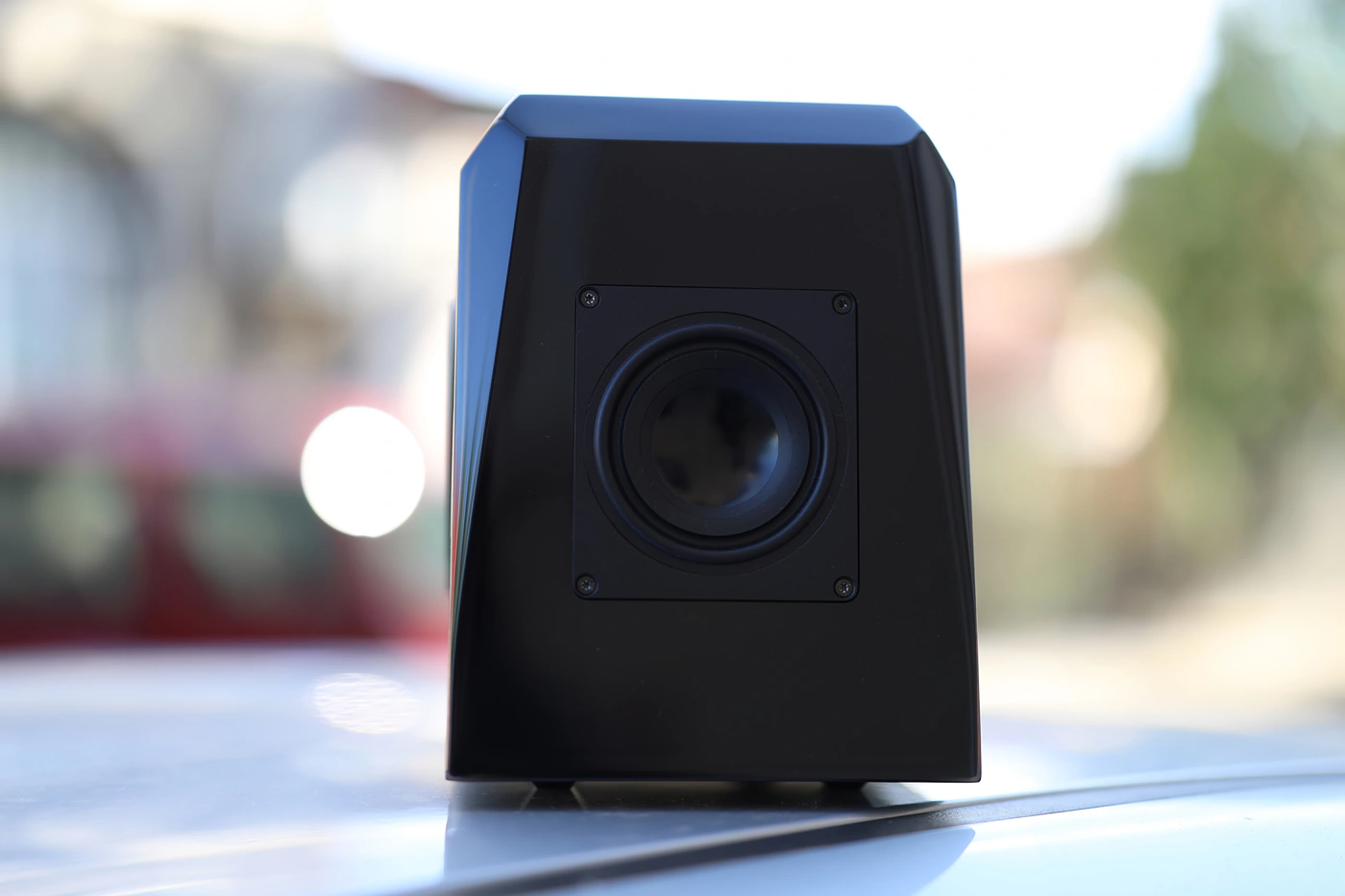
Audience ClairAudient 1+1 V5 vs Amphion Argon3s (3900 USD vs 3000 USD)
Build – The outer design of Argon 3s is rather nice, as they have that pleasing matte touch finish, and the passive radiators on the back surely adds a bit of kick to the speakers. I like the fact that Argon 3s has those large wave guides that disperse the music evenly across the entire room, but 1+1 V5 also has a good dispersion and allos for a more versatile positioning, sounding excellent both up close and from far away. 1+1 V5 is easier to drive and scales more with the amplifier, Argon3S simply does not have as much resolution and clarity, so while they need more power, they also need just raw power which can be provided by a more entry-level amplifier.
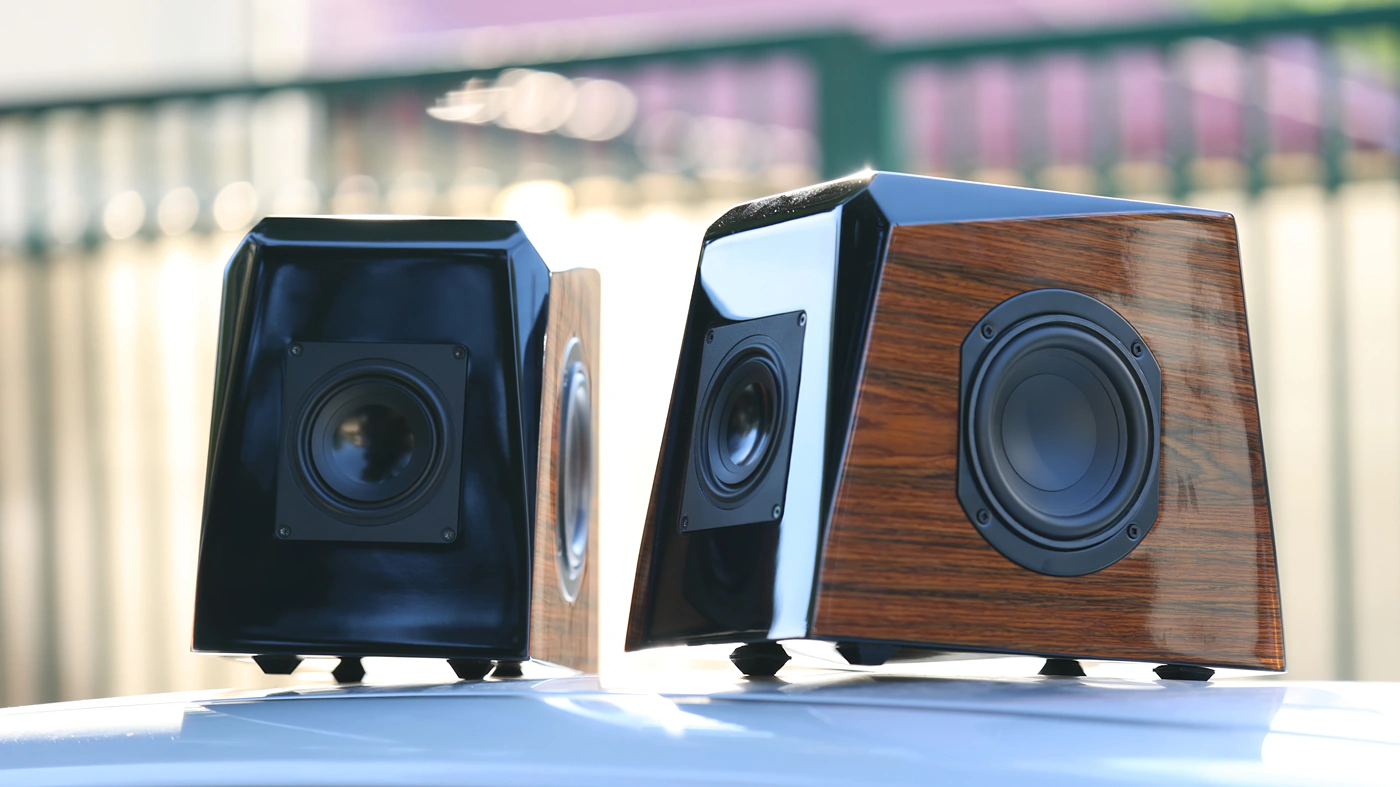
Sound – You can hear a much more natural midrange tonality coming from the 1+1 V5 which has a better resolution, reveals more information in both the midrange and the treble, but stays smoother, sounds wider, more holographic and can create both the feeling of space and also kick and punch much better. Argon 3s is a mid centric speaker, but the tonality feels as if the midrange is sucked out slightly, sounding detailed, but a bit grainy, as it has a sharp transient response, and the tweeter takes over the mid woofer in presence and resolution at most times, while with 1+1 V5 all elements are kept equal, with a smoother transient response, and subsequently a much more forgiving sound despite it being more detailed. An interesting thing happens in the bass, as you’d expect the Argon 3S to have more bass, but Audience Clair Audient actually has a higher amount of low end and impact, and the roll-off point of the drivers is at a similar point audibly. The impulse response of the 1+1 V5 is much quicker, creating a more rhythmic sound, faster and with better accuracy, while Argon 3S has a slower bass, which creates more boom but it is less precise. Audience created a speaker with more personality, more detail and a higher resolution without making it brighter or harsher, and this is a true achievement as it is smaller.
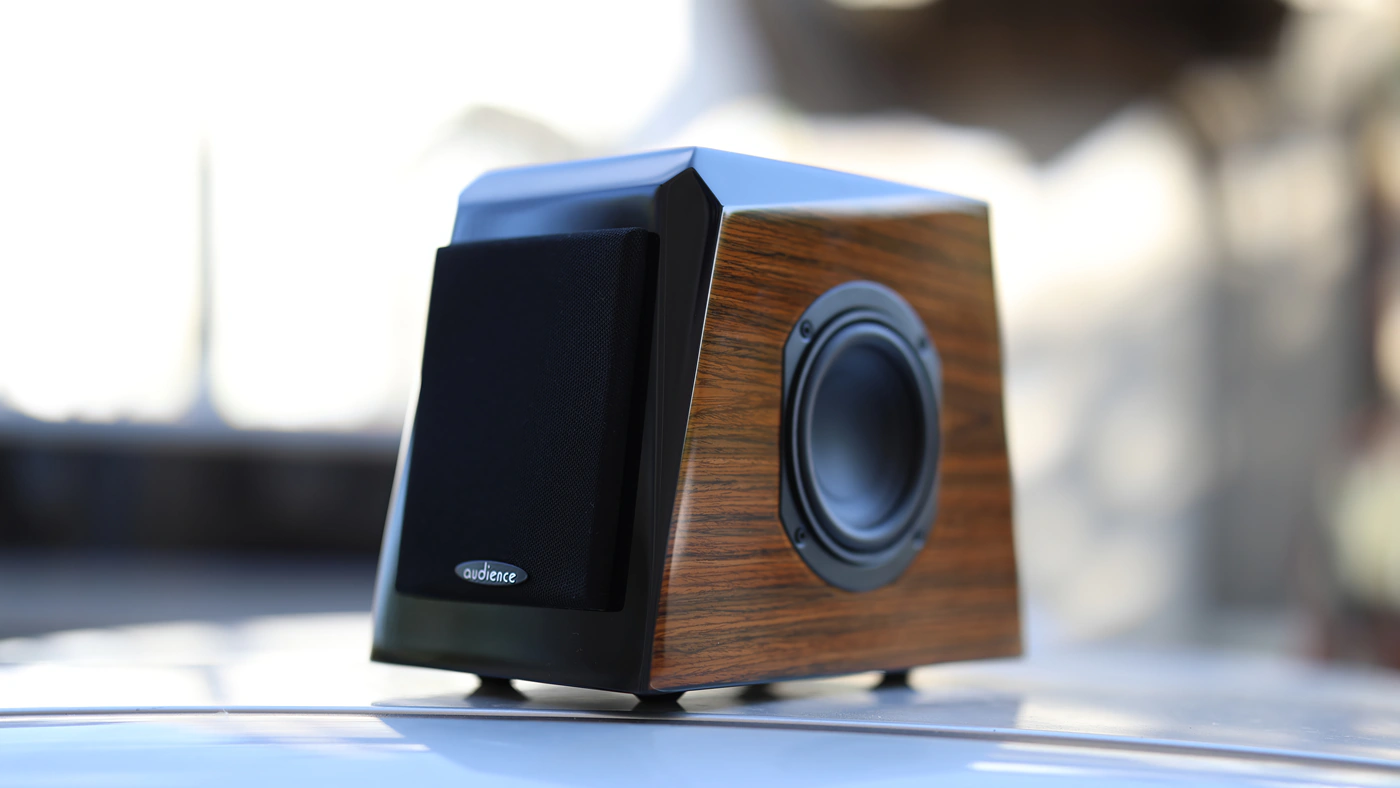
Audience ClairAudient 1+1 V5 vs Pylon Audio Diamond 30 mkii (3900 USD vs 3000 USD)
Build – It is time to put the 1+1 V5 against what I currently use as my main desktop speakers. Pylon Audio 30 MKII takes a lot of space, needs to be at least 1 metre away from you, with preferably more for the sound dispersion to happen properly, and it is a tower speaker that needs you to take the wall behind into account carefully. The advantages of Diamond 30 mkii include that they are much easier to drive with any kind of AMP, and will sound excellent even out of basically a potato entry-level AMP, and they scale well with the source, just like 1+1 V5. Both speakers are made well, both use high-end components, but shipping and handling 1+1 V5 is much easier thanks to the smaller shape and design. Both will be pure bliss in an acoustically treated room, but Pylon 30 mkii also can work well in a bad room, as the only thing you need is for them to be vaguely aimed at you, while 1+1 V5 can be brought closer to you if you want to cancel room influence and a badly sounding room. The sweet spot of excellent sonics is a tiny bit wider with Pylon audio, both vertical and lateral dispersion is a bit larger, while with 1+1 V5, the sweet spot is more precise.
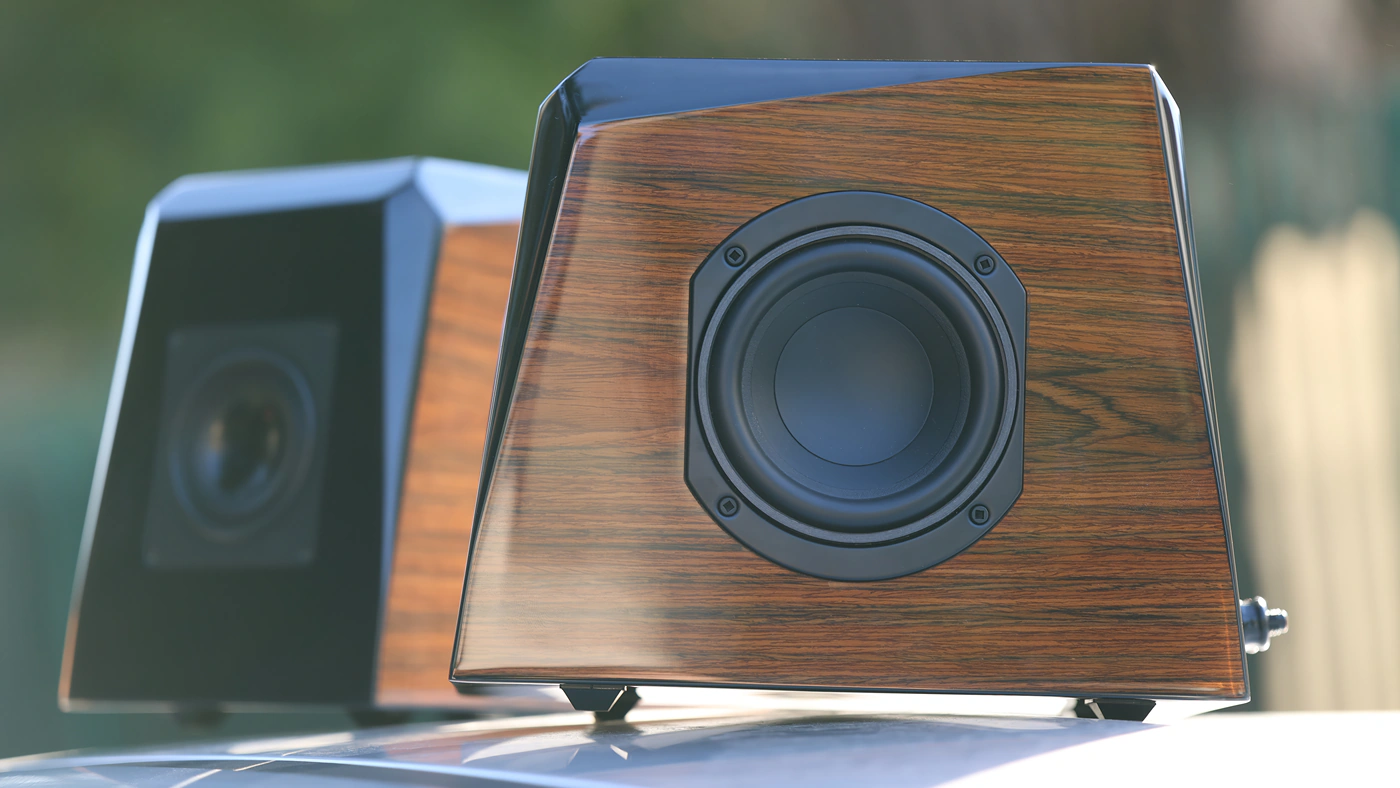
Sound – Sonically, going back and forth between them, I can see how both are favourites and how I love both, but for very different reasons. Pylon Audio Diamond 30 mkii has a full bass, to the point where it does not really need any subwoofer, and will sound downright excellent even without a dedicated sub. The Bass Roll-Off is higher on the 1+1 V5, which is quite evident and expected when you factor in the size of the drivers, but they can still pack a punch and show excellent dynamics, despite being in the same class as mini-bookshelf speakers. The soundstage size is wide for both setups, but 1+1 V5 will push forward the voices, reveal more presence in lead instruments, all while the rest of the music can happen behind, while Diamond 30 mkii will have the most forward layer of instruments slightly behind, everything is always a bit more distant. So Diamond 30 mkii is not just warmer, but also sounds more distant, which creates the feeling of more space and a wider soundstage in music, while 1+1 V5 has that monitoring quality, where it really puts things into a more forward perspective. The treble is more sharp on the Diamond 30 mkii, it bites more, and can reveal harshness in music quicker, which makes 1+1 V5 more relaxed, smoother, and more forgiving, but also easier to work with for longer hours. The impulse response of the 1+1 V5 is more even, more natural, while the three driver types in Diamond 30 mkii will lead to three different levels of impulse response. Generally speaking, 1+1 V5 sounds like a high-end studio monitor, which is detailed, but with a mid centric sound, excellent resolution, and good layering, while Diamond 30 mkii sounds like an audiophile pair of speakers, wider, brighter and bassier in the sub bass, with more focus on musicality and taking more risk when it comes to presenting bite and fatiguing elements in music. With ClairAudient, you always know what the lead instrument is, and it makes things easily evident for mixing and mastering, while Diamond 30 mkii does not make minute changes as evident, especially if mixing and mastering voice, showing more of a complete image of the song, without drawing particular focus to each element in particular. Both are top-notch, 1+1 V5 allows you to experiment more with positioning, while Diamond 30 mkii cannot physically or sonically work as a monitor as well.
Value and Conclusion
I often get the question whether a high-end pair of small sized speakers can provide proper performance and enough to justify their asking price, but I found that 1+1 V5 punchies far above the physical size and price, the resolution, soundstage width, instrument separation and dynamics are far better than you expect, and if size / space is a constraint for you in any way, you will love the sound 1+1 V5 can produce all while taking the same space as an Aurender S5W or FiiO SP3 BT. The only thing you need to take care of is the AMP behind them, as they can easily require more than most generally have lying around the house.

Before the end of today’s review, I want to add the ClairAudient 1+1 V5 to the Audiophile-Heaven Hall Of Fame, as currently the best sounding small-size speaker on the market, having performance that could easily serve a high-end music production studio with their resolution, clarity and frequency response, especially having zero dips and zero peaks thanks to the wideband dynamic driver.
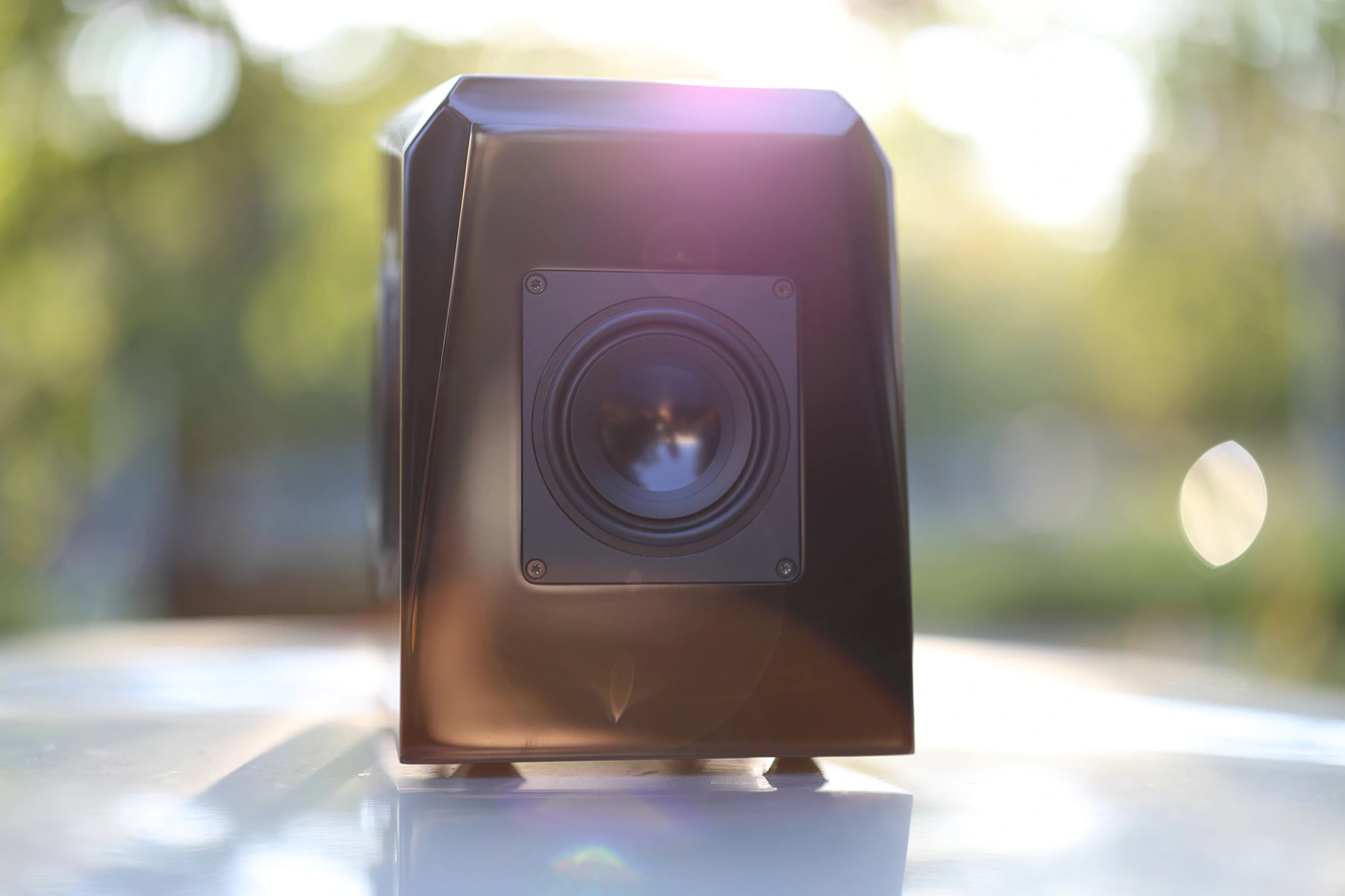
At the end of the day, if you’re searching for perfection in the sound, if you’re looking for the absolute best sonic possible at this size, and if you don’t mind the need for an AMP, the ClairAudient 1+1 V5 is one of the most interesting sounding speaker sets in the whole world, having both the punch, dynamics, clarity and the soundstage to be considered a high-end model.
Product Link
Official Link – https://audience-av.com/loudspeakers/
--- Please remember to stay safe, and always have fun while listening to music!---
- If you have a dime to spare, please donate, and help us! It would make the day brighter for me and my wife-
Full Playlist used for this review
We listened to more songs than those named in this playlist, but those are excellent for identifying a sonic signature. I recommend trying most of the songs from this playlist, especially if you’re searching for new music! The playlists are different for Spotify, Tidal and Youtube, and based on the songs I enjoy and are available on each!
https://www.youtube.com/playlist?list=PL_cjBXGmwSHSdGcwuc_bKbBDGHL4QvYBu
https://open.spotify.com/playlist/5J3oloz8Riy9LxEGenOjQ0?si=979ba4f082414be7
https://tidal.com/browse/playlist/330fd544-8e5b-4839-bd35-676b2edbb3d5
--- Contact Us ---





